Quick filters:
Feast passover history Stock Photos and Images
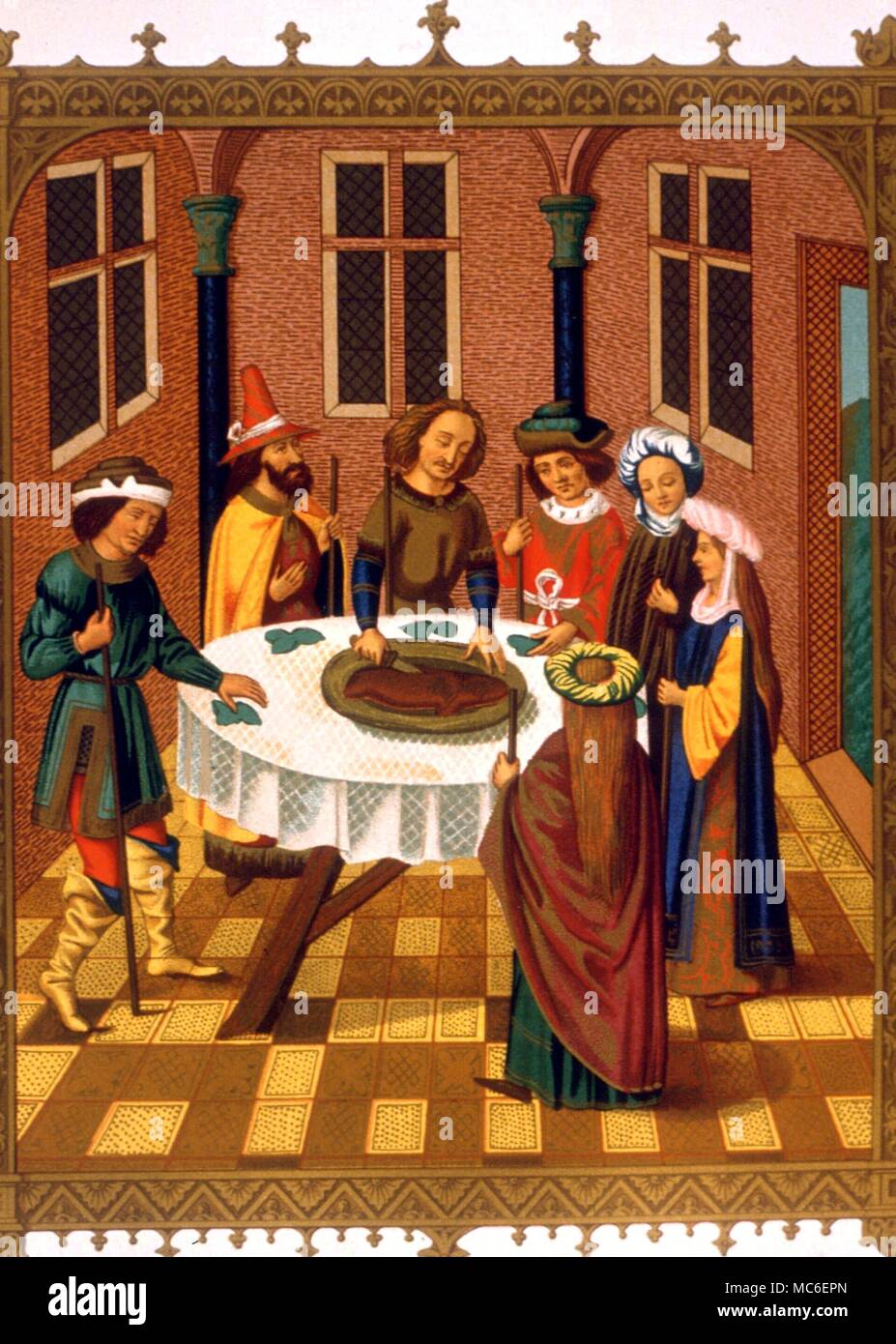 CALENDARS - Jewish The Feast of the Passover - one of the many Jewish festivals which was determined by observation of the new lunar crescent. Chromo-lithograph of the Bibl. Arsenal (Lat. 199) mss showingh the Jewish passover Stock Photohttps://www.alamy.com/image-license-details/?v=1https://www.alamy.com/calendars-jewish-the-feast-of-the-passover-one-of-the-many-jewish-festivals-which-was-determined-by-observation-of-the-new-lunar-crescent-chromo-lithograph-of-the-bibl-arsenal-lat-199-mss-showingh-the-jewish-passover-image179622877.html
CALENDARS - Jewish The Feast of the Passover - one of the many Jewish festivals which was determined by observation of the new lunar crescent. Chromo-lithograph of the Bibl. Arsenal (Lat. 199) mss showingh the Jewish passover Stock Photohttps://www.alamy.com/image-license-details/?v=1https://www.alamy.com/calendars-jewish-the-feast-of-the-passover-one-of-the-many-jewish-festivals-which-was-determined-by-observation-of-the-new-lunar-crescent-chromo-lithograph-of-the-bibl-arsenal-lat-199-mss-showingh-the-jewish-passover-image179622877.htmlRMMC6EPN–CALENDARS - Jewish The Feast of the Passover - one of the many Jewish festivals which was determined by observation of the new lunar crescent. Chromo-lithograph of the Bibl. Arsenal (Lat. 199) mss showingh the Jewish passover
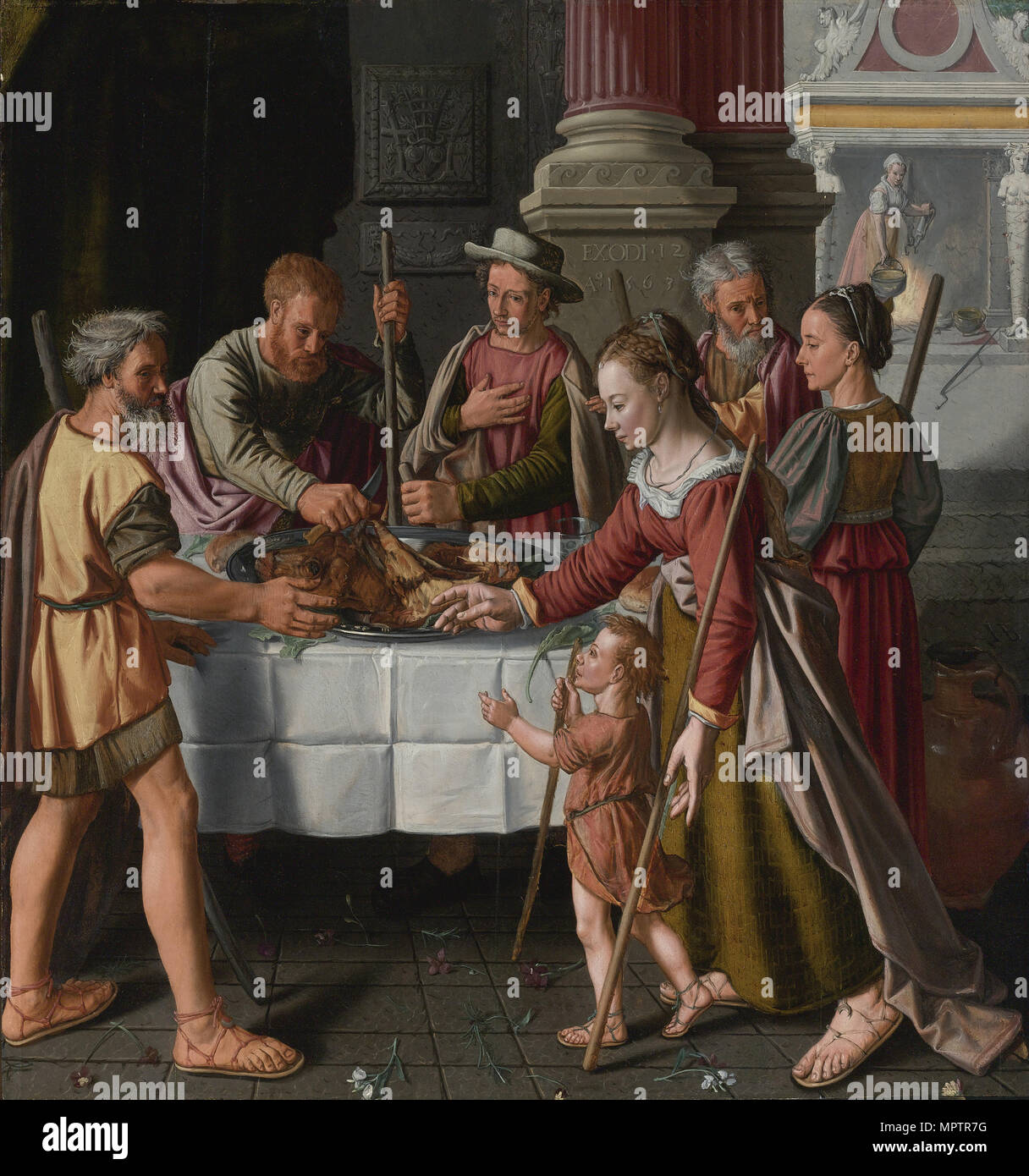 The First Passover Feast. Stock Photohttps://www.alamy.com/image-license-details/?v=1https://www.alamy.com/the-first-passover-feast-image186171204.html
The First Passover Feast. Stock Photohttps://www.alamy.com/image-license-details/?v=1https://www.alamy.com/the-first-passover-feast-image186171204.htmlRMMPTR7G–The First Passover Feast.
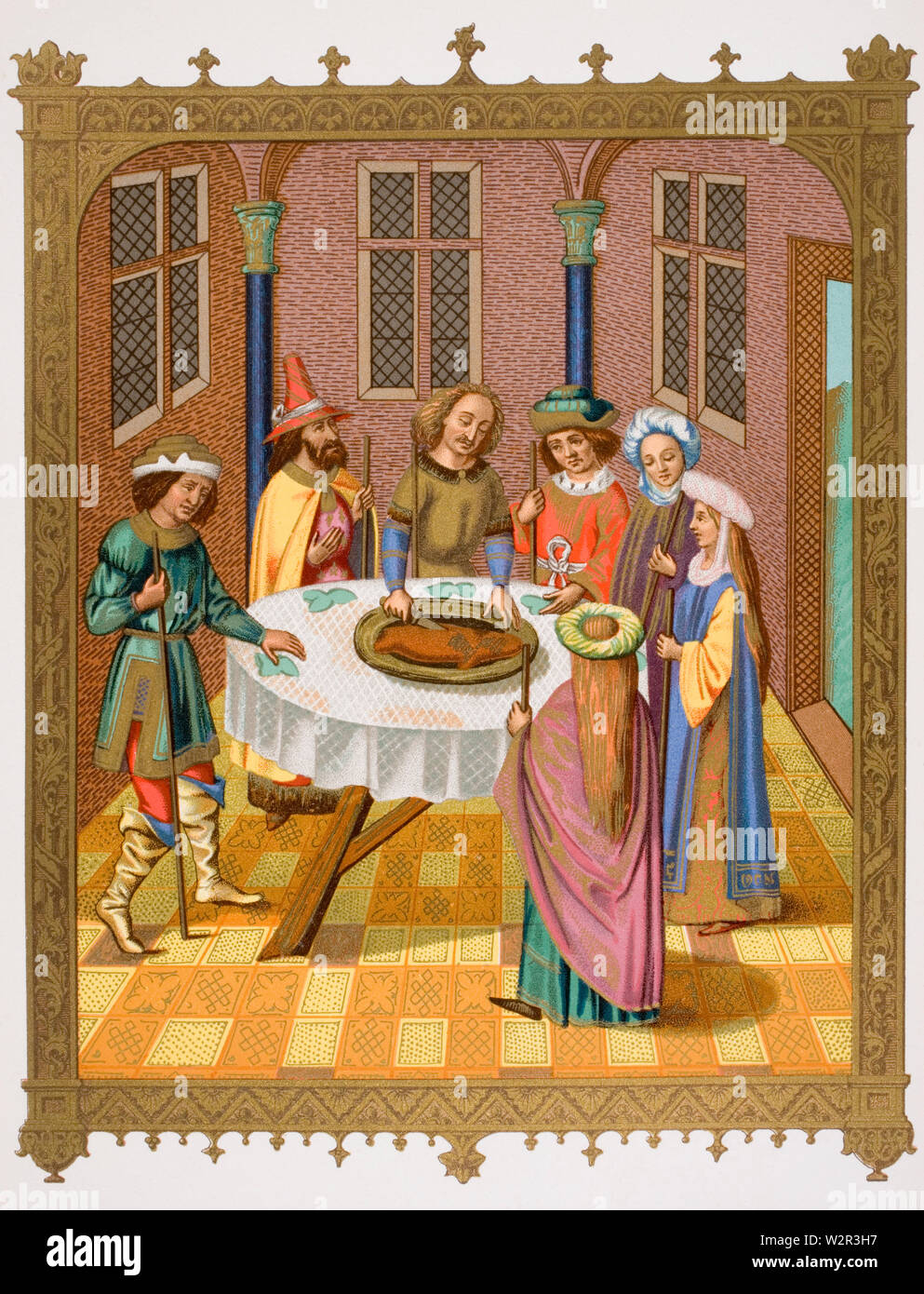 The Jew's Passover. Facsimile of a miniature from a missal of the fifteenth century ornamented with painting of the school of Ven Eyck. Stock Photohttps://www.alamy.com/image-license-details/?v=1https://www.alamy.com/the-jews-passover-facsimile-of-a-miniature-from-a-missal-of-the-fifteenth-century-ornamented-with-painting-of-the-school-of-ven-eyck-image259892563.html
The Jew's Passover. Facsimile of a miniature from a missal of the fifteenth century ornamented with painting of the school of Ven Eyck. Stock Photohttps://www.alamy.com/image-license-details/?v=1https://www.alamy.com/the-jews-passover-facsimile-of-a-miniature-from-a-missal-of-the-fifteenth-century-ornamented-with-painting-of-the-school-of-ven-eyck-image259892563.htmlRMW2R3H7–The Jew's Passover. Facsimile of a miniature from a missal of the fifteenth century ornamented with painting of the school of Ven Eyck.
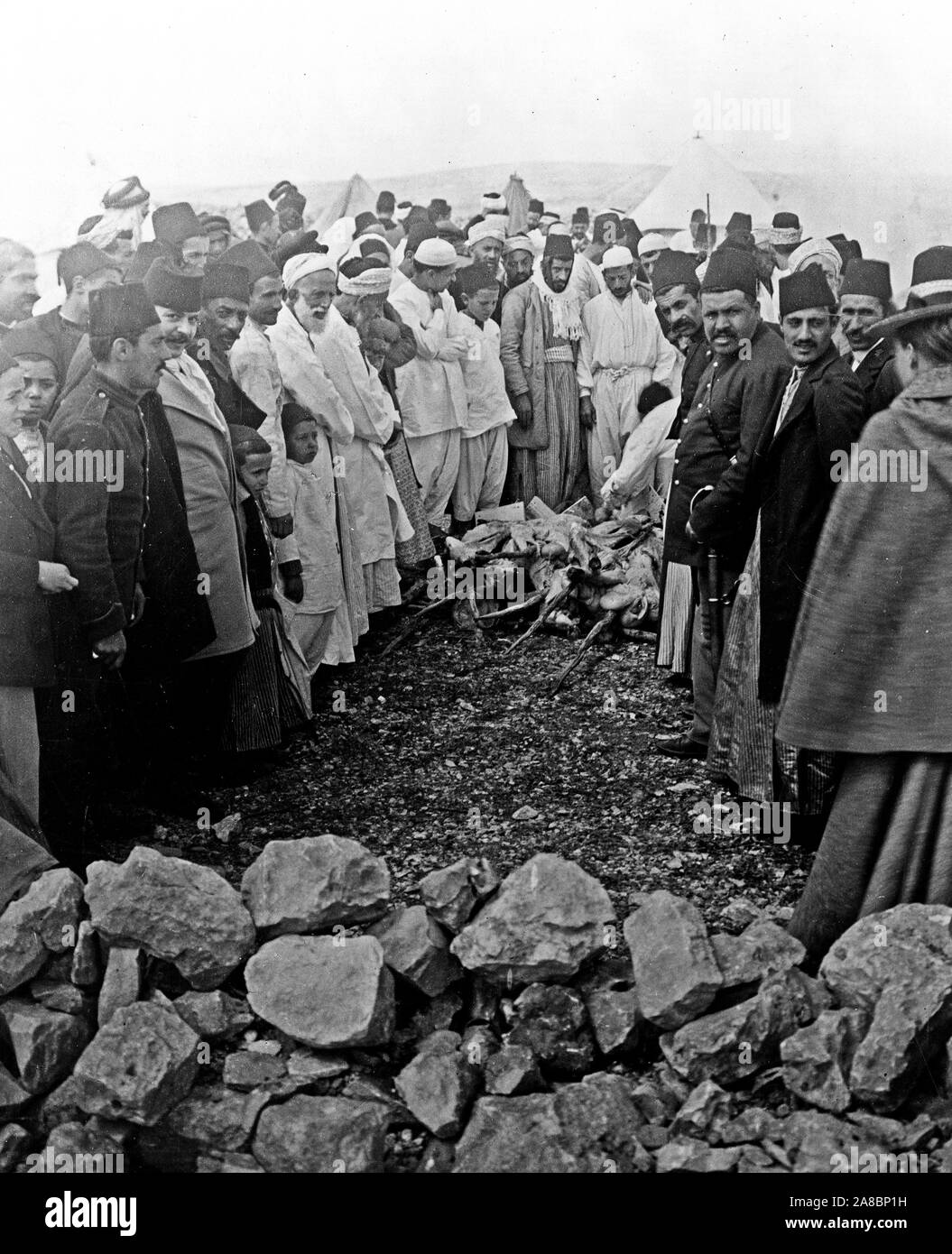 Samaritans around meat being cooked over open fire, Mount Gerizim, West Bank. Feast of the Passover 1880-1922 Stock Photohttps://www.alamy.com/image-license-details/?v=1https://www.alamy.com/samaritans-around-meat-being-cooked-over-open-fire-mount-gerizim-west-bank-feast-of-the-passover-1880-1922-image332173005.html
Samaritans around meat being cooked over open fire, Mount Gerizim, West Bank. Feast of the Passover 1880-1922 Stock Photohttps://www.alamy.com/image-license-details/?v=1https://www.alamy.com/samaritans-around-meat-being-cooked-over-open-fire-mount-gerizim-west-bank-feast-of-the-passover-1880-1922-image332173005.htmlRM2A8BP1H–Samaritans around meat being cooked over open fire, Mount Gerizim, West Bank. Feast of the Passover 1880-1922
 seder feast and accompanying passover preparations Stock Photohttps://www.alamy.com/image-license-details/?v=1https://www.alamy.com/stock-photo-seder-feast-and-accompanying-passover-preparations-25770958.html
seder feast and accompanying passover preparations Stock Photohttps://www.alamy.com/image-license-details/?v=1https://www.alamy.com/stock-photo-seder-feast-and-accompanying-passover-preparations-25770958.htmlRMBDWY3A–seder feast and accompanying passover preparations
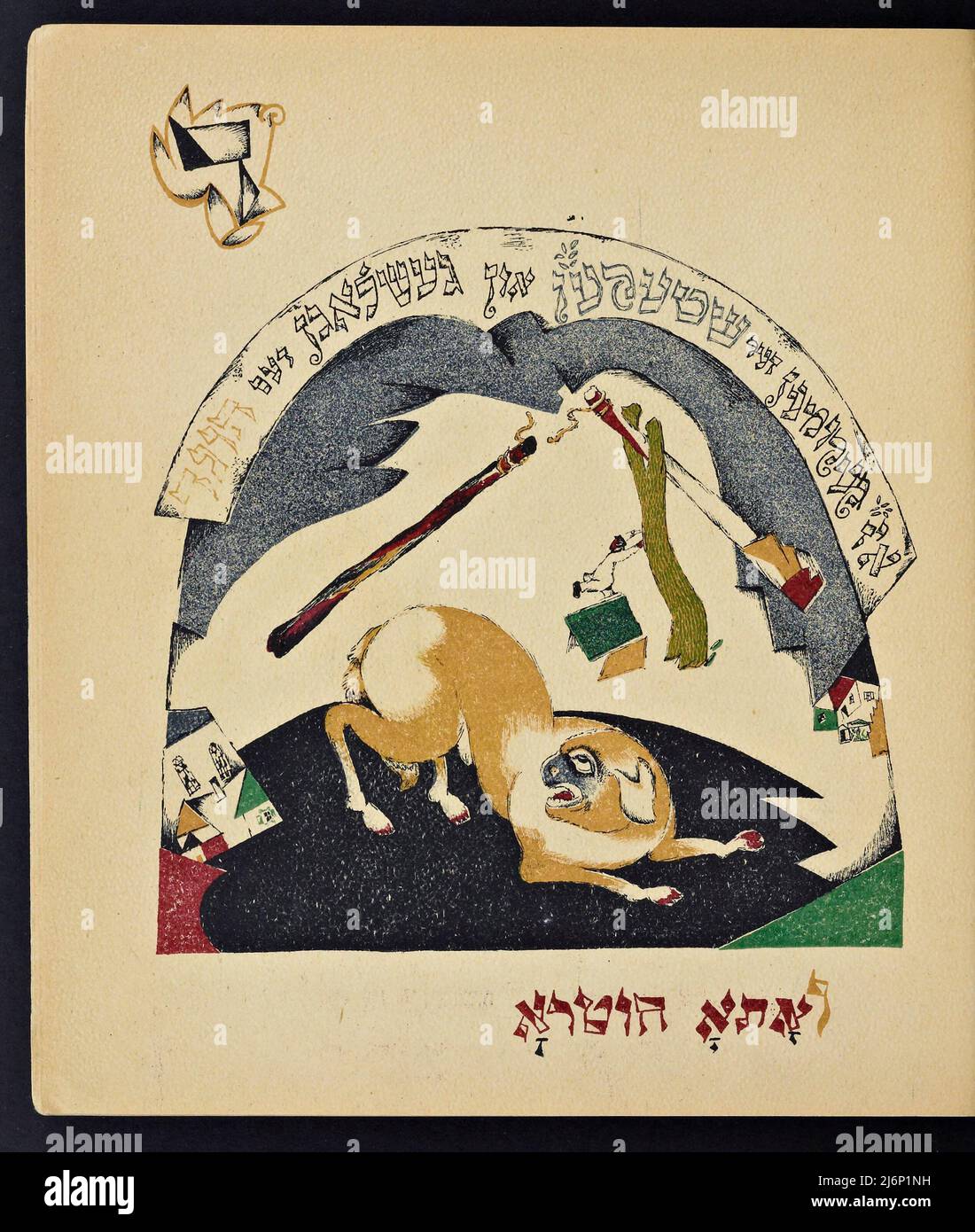 Illustrated Yiddish version of Had Gadya children's book illustrated by El Lissitzky (Lazar Markovich Lissitzky), and published in Kiev in 1919 Chad Gadya or Had Gadya ('one little goat, or 'one kid') is a playful cumulative song in Aramaic and Hebrew. It is sung at the end of the Passover Seder, the Jewish ritual feast that marks the beginning of the Jewish holiday of Passover. The melody may have its roots in Medieval German folk music. It first appeared in a Haggadah printed in Prague in 1590, which makes it the most recent inclusion in the traditional Passover seder liturgy Stock Photohttps://www.alamy.com/image-license-details/?v=1https://www.alamy.com/illustrated-yiddish-version-of-had-gadya-childrens-book-illustrated-by-el-lissitzky-lazar-markovich-lissitzky-and-published-in-kiev-in-1919-chad-gadya-or-had-gadya-one-little-goat-or-one-kid-is-a-playful-cumulative-song-in-aramaic-and-hebrew-it-is-sung-at-the-end-of-the-passover-seder-the-jewish-ritual-feast-that-marks-the-beginning-of-the-jewish-holiday-of-passover-the-melody-may-have-its-roots-in-medieval-german-folk-music-it-first-appeared-in-a-haggadah-printed-in-prague-in-1590-which-makes-it-the-most-recent-inclusion-in-the-traditional-passover-seder-liturgy-image468852205.html
Illustrated Yiddish version of Had Gadya children's book illustrated by El Lissitzky (Lazar Markovich Lissitzky), and published in Kiev in 1919 Chad Gadya or Had Gadya ('one little goat, or 'one kid') is a playful cumulative song in Aramaic and Hebrew. It is sung at the end of the Passover Seder, the Jewish ritual feast that marks the beginning of the Jewish holiday of Passover. The melody may have its roots in Medieval German folk music. It first appeared in a Haggadah printed in Prague in 1590, which makes it the most recent inclusion in the traditional Passover seder liturgy Stock Photohttps://www.alamy.com/image-license-details/?v=1https://www.alamy.com/illustrated-yiddish-version-of-had-gadya-childrens-book-illustrated-by-el-lissitzky-lazar-markovich-lissitzky-and-published-in-kiev-in-1919-chad-gadya-or-had-gadya-one-little-goat-or-one-kid-is-a-playful-cumulative-song-in-aramaic-and-hebrew-it-is-sung-at-the-end-of-the-passover-seder-the-jewish-ritual-feast-that-marks-the-beginning-of-the-jewish-holiday-of-passover-the-melody-may-have-its-roots-in-medieval-german-folk-music-it-first-appeared-in-a-haggadah-printed-in-prague-in-1590-which-makes-it-the-most-recent-inclusion-in-the-traditional-passover-seder-liturgy-image468852205.htmlRF2J6P1NH–Illustrated Yiddish version of Had Gadya children's book illustrated by El Lissitzky (Lazar Markovich Lissitzky), and published in Kiev in 1919 Chad Gadya or Had Gadya ('one little goat, or 'one kid') is a playful cumulative song in Aramaic and Hebrew. It is sung at the end of the Passover Seder, the Jewish ritual feast that marks the beginning of the Jewish holiday of Passover. The melody may have its roots in Medieval German folk music. It first appeared in a Haggadah printed in Prague in 1590, which makes it the most recent inclusion in the traditional Passover seder liturgy
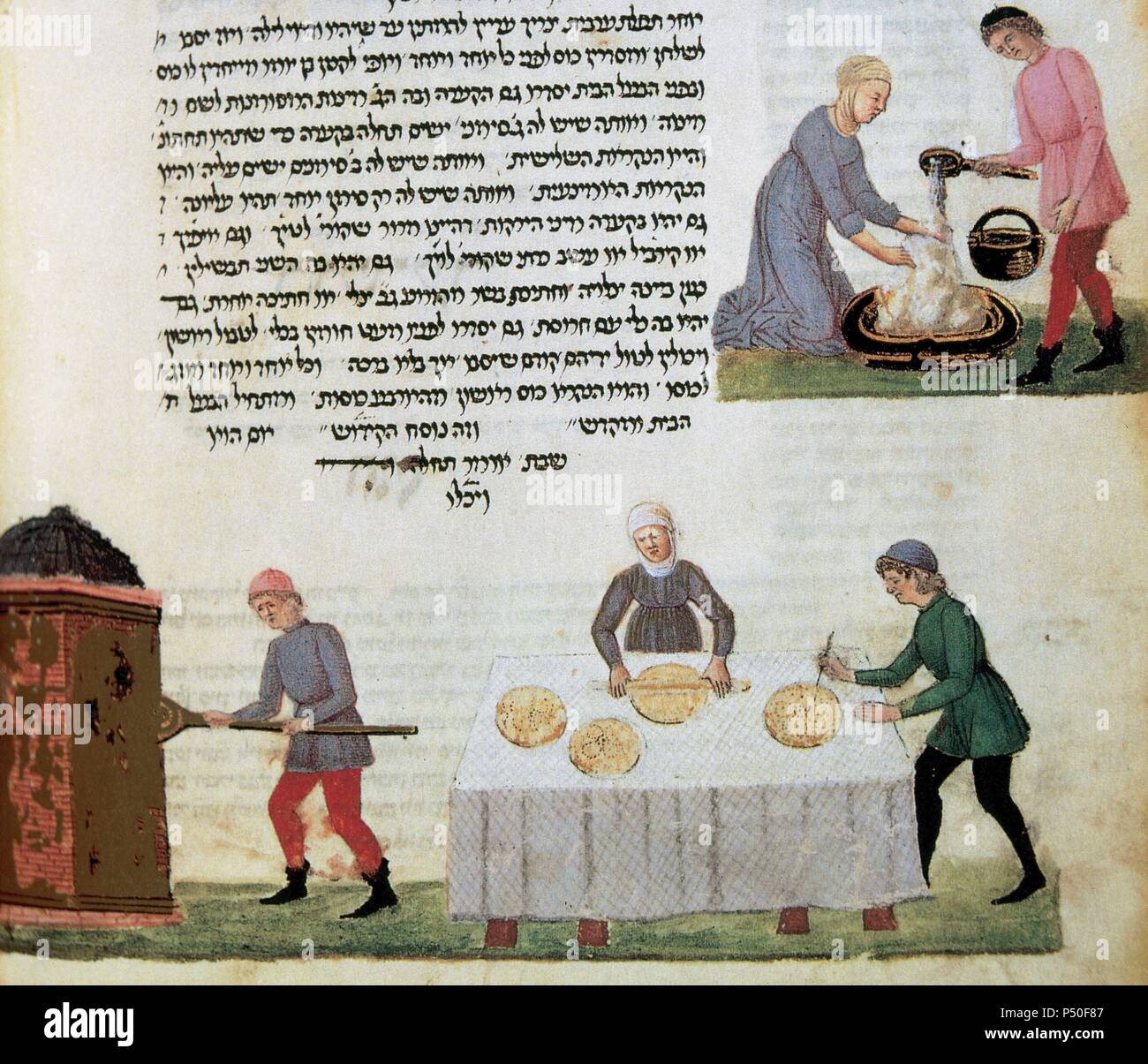 Rothschild Miscelany. Manuscript dated in1640. Page of facsimile published in London, written in Hebrew and illustrated, depicting the preparation of matzo unleavened bread for the feast of the Jewish Passover. CSIC. Madrid. Spain. Stock Photohttps://www.alamy.com/image-license-details/?v=1https://www.alamy.com/rothschild-miscelany-manuscript-dated-in1640-page-of-facsimile-published-in-london-written-in-hebrew-and-illustrated-depicting-the-preparation-of-matzo-unleavened-bread-for-the-feast-of-the-jewish-passover-csic-madrid-spain-image209609687.html
Rothschild Miscelany. Manuscript dated in1640. Page of facsimile published in London, written in Hebrew and illustrated, depicting the preparation of matzo unleavened bread for the feast of the Jewish Passover. CSIC. Madrid. Spain. Stock Photohttps://www.alamy.com/image-license-details/?v=1https://www.alamy.com/rothschild-miscelany-manuscript-dated-in1640-page-of-facsimile-published-in-london-written-in-hebrew-and-illustrated-depicting-the-preparation-of-matzo-unleavened-bread-for-the-feast-of-the-jewish-passover-csic-madrid-spain-image209609687.htmlRMP50F87–Rothschild Miscelany. Manuscript dated in1640. Page of facsimile published in London, written in Hebrew and illustrated, depicting the preparation of matzo unleavened bread for the feast of the Jewish Passover. CSIC. Madrid. Spain.
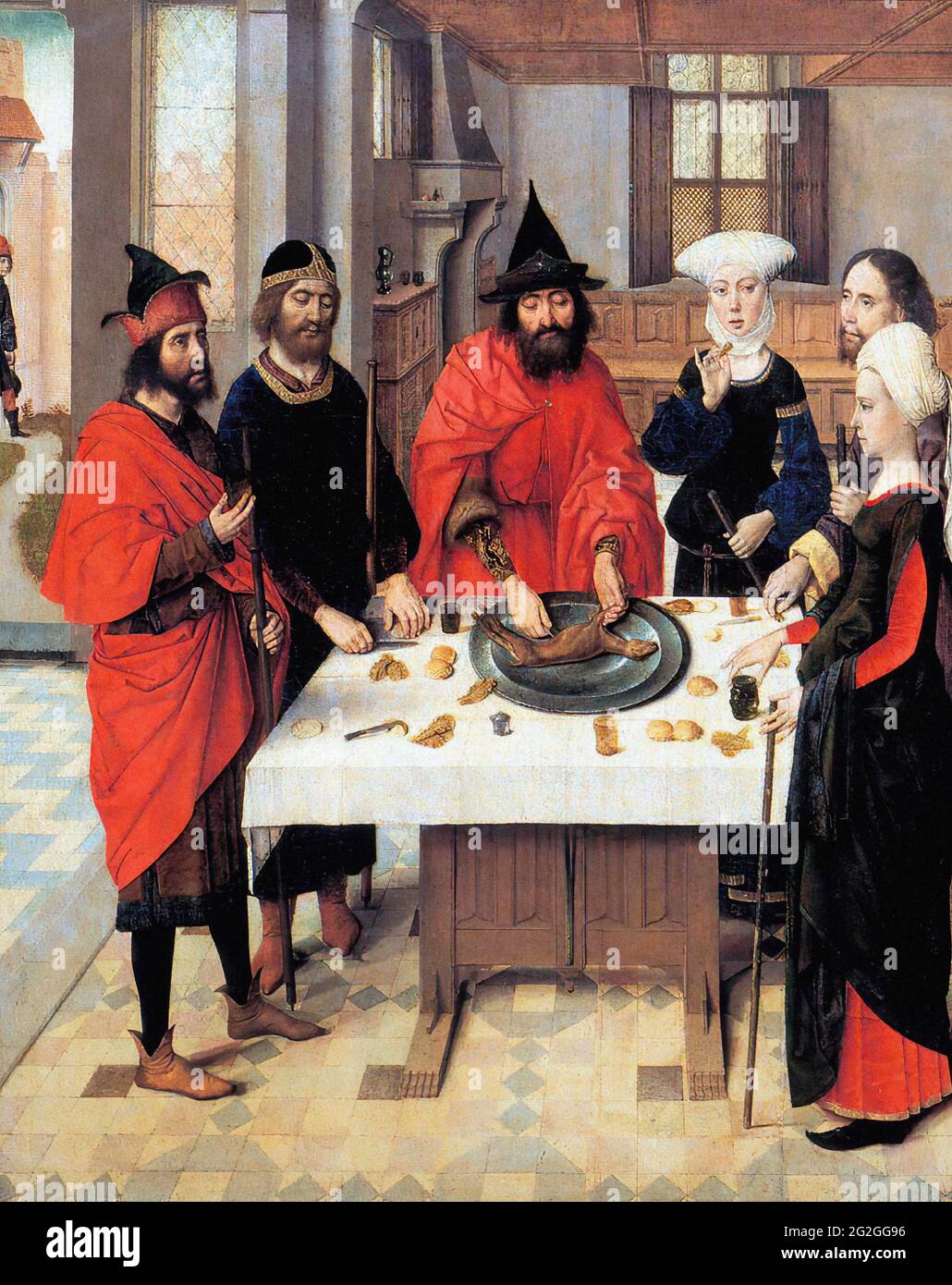 Dirk Bouts - Feast Passover Winged Altar St Peter Leuven C 1465 Stock Photohttps://www.alamy.com/image-license-details/?v=1https://www.alamy.com/dirk-bouts-feast-passover-winged-altar-st-peter-leuven-c-1465-image431852546.html
Dirk Bouts - Feast Passover Winged Altar St Peter Leuven C 1465 Stock Photohttps://www.alamy.com/image-license-details/?v=1https://www.alamy.com/dirk-bouts-feast-passover-winged-altar-st-peter-leuven-c-1465-image431852546.htmlRF2G2GG96–Dirk Bouts - Feast Passover Winged Altar St Peter Leuven C 1465
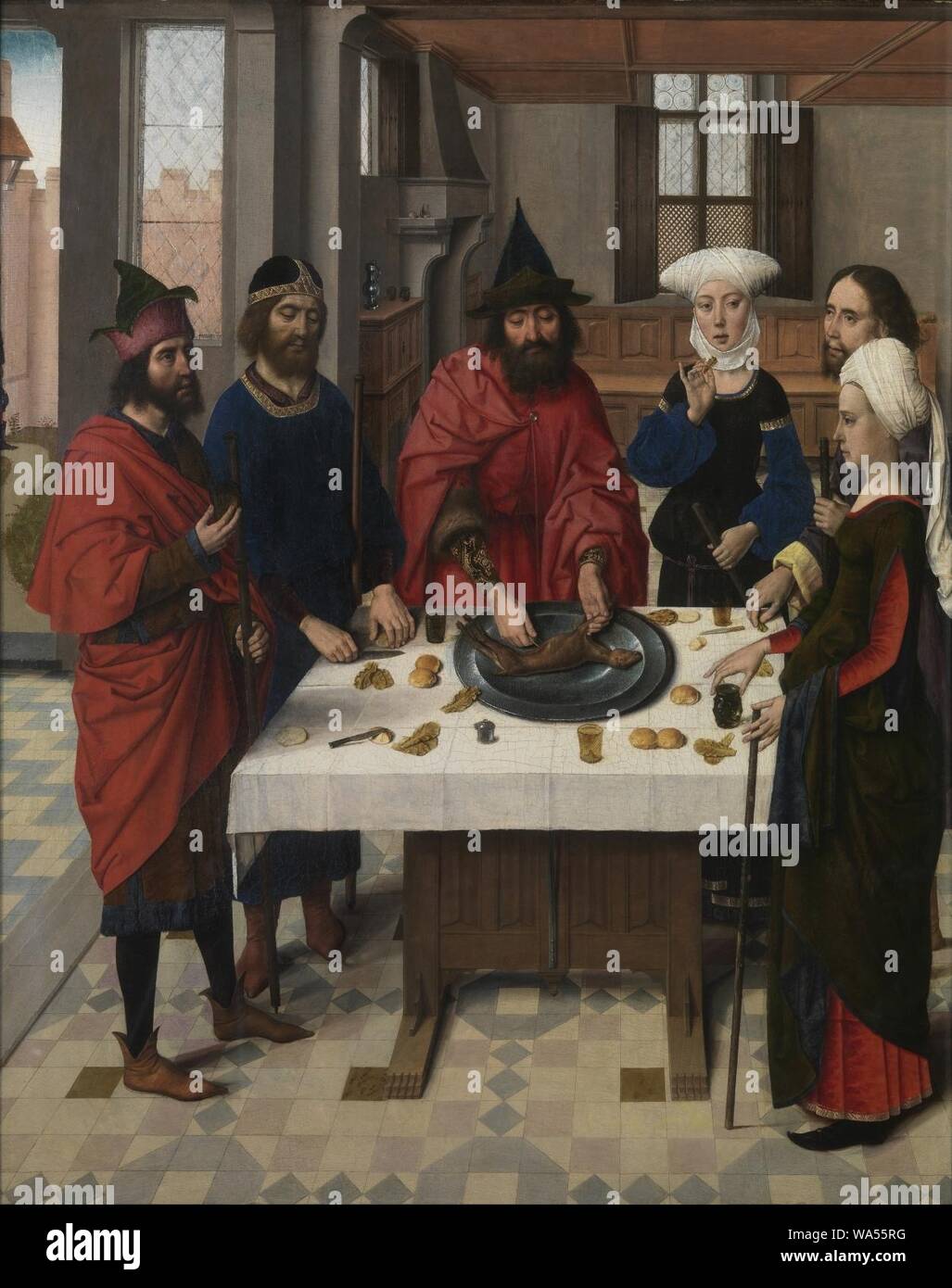 Dieric Bouts - The Feast of the Passover Stock Photohttps://www.alamy.com/image-license-details/?v=1https://www.alamy.com/dieric-bouts-the-feast-of-the-passover-image264416420.html
Dieric Bouts - The Feast of the Passover Stock Photohttps://www.alamy.com/image-license-details/?v=1https://www.alamy.com/dieric-bouts-the-feast-of-the-passover-image264416420.htmlRMWA55RG–Dieric Bouts - The Feast of the Passover
 . English: Illustration from Juedisches Ceremoniel, a German book published in Nürnberg in 1724 by Peter Conrad Monath. The book is a beautifully illustrated description of Jewish religious ceremonies, rites of passage and feast days, which first appeared in 1716, here in its second edition of 1724. The extremely detailed plates, by Georg Puschner, depict priestly robes, the celebrations of the New Year, Passover, the weekly Sabbath, circumcision, presentation of the first born, prayer at the synagogue, a wedding procession and a wedding, purification of the bride, the washing of the brother-i Stock Photohttps://www.alamy.com/image-license-details/?v=1https://www.alamy.com/english-illustration-from-juedisches-ceremoniel-a-german-book-published-in-nrnberg-in-1724-by-peter-conrad-monath-the-book-is-a-beautifully-illustrated-description-of-jewish-religious-ceremonies-rites-of-passage-and-feast-days-which-first-appeared-in-1716-here-in-its-second-edition-of-1724-the-extremely-detailed-plates-by-georg-puschner-depict-priestly-robes-the-celebrations-of-the-new-year-passover-the-weekly-sabbath-circumcision-presentation-of-the-first-born-prayer-at-the-synagogue-a-wedding-procession-and-a-wedding-purification-of-the-bride-the-washing-of-the-brother-i-image185703454.html
. English: Illustration from Juedisches Ceremoniel, a German book published in Nürnberg in 1724 by Peter Conrad Monath. The book is a beautifully illustrated description of Jewish religious ceremonies, rites of passage and feast days, which first appeared in 1716, here in its second edition of 1724. The extremely detailed plates, by Georg Puschner, depict priestly robes, the celebrations of the New Year, Passover, the weekly Sabbath, circumcision, presentation of the first born, prayer at the synagogue, a wedding procession and a wedding, purification of the bride, the washing of the brother-i Stock Photohttps://www.alamy.com/image-license-details/?v=1https://www.alamy.com/english-illustration-from-juedisches-ceremoniel-a-german-book-published-in-nrnberg-in-1724-by-peter-conrad-monath-the-book-is-a-beautifully-illustrated-description-of-jewish-religious-ceremonies-rites-of-passage-and-feast-days-which-first-appeared-in-1716-here-in-its-second-edition-of-1724-the-extremely-detailed-plates-by-georg-puschner-depict-priestly-robes-the-celebrations-of-the-new-year-passover-the-weekly-sabbath-circumcision-presentation-of-the-first-born-prayer-at-the-synagogue-a-wedding-procession-and-a-wedding-purification-of-the-bride-the-washing-of-the-brother-i-image185703454.htmlRMMP3EJ6–. English: Illustration from Juedisches Ceremoniel, a German book published in Nürnberg in 1724 by Peter Conrad Monath. The book is a beautifully illustrated description of Jewish religious ceremonies, rites of passage and feast days, which first appeared in 1716, here in its second edition of 1724. The extremely detailed plates, by Georg Puschner, depict priestly robes, the celebrations of the New Year, Passover, the weekly Sabbath, circumcision, presentation of the first born, prayer at the synagogue, a wedding procession and a wedding, purification of the bride, the washing of the brother-i
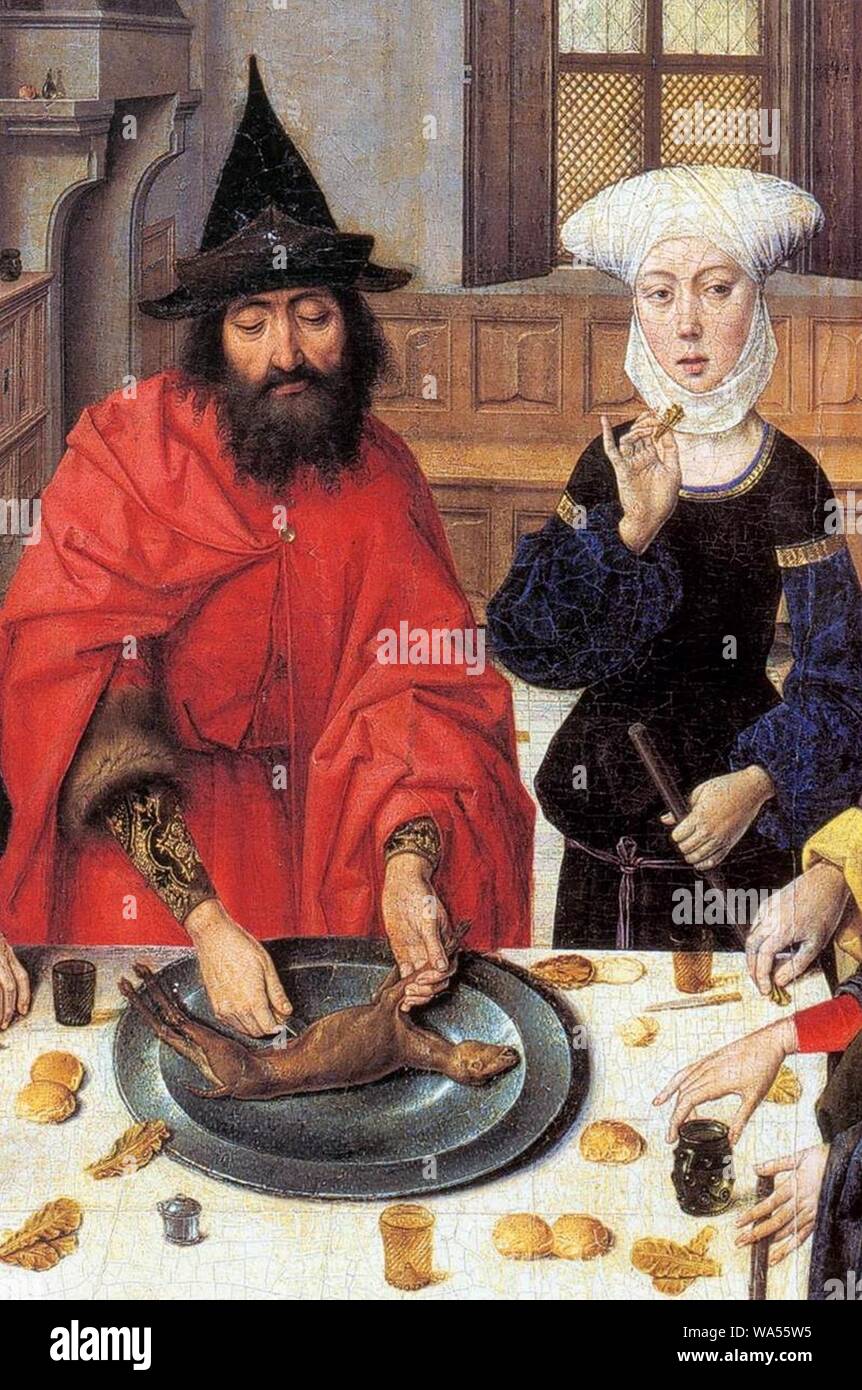 Dieric Bouts - The Feast of the Passover (detail) Stock Photohttps://www.alamy.com/image-license-details/?v=1https://www.alamy.com/dieric-bouts-the-feast-of-the-passover-detail-image264416465.html
Dieric Bouts - The Feast of the Passover (detail) Stock Photohttps://www.alamy.com/image-license-details/?v=1https://www.alamy.com/dieric-bouts-the-feast-of-the-passover-detail-image264416465.htmlRMWA55W5–Dieric Bouts - The Feast of the Passover (detail)
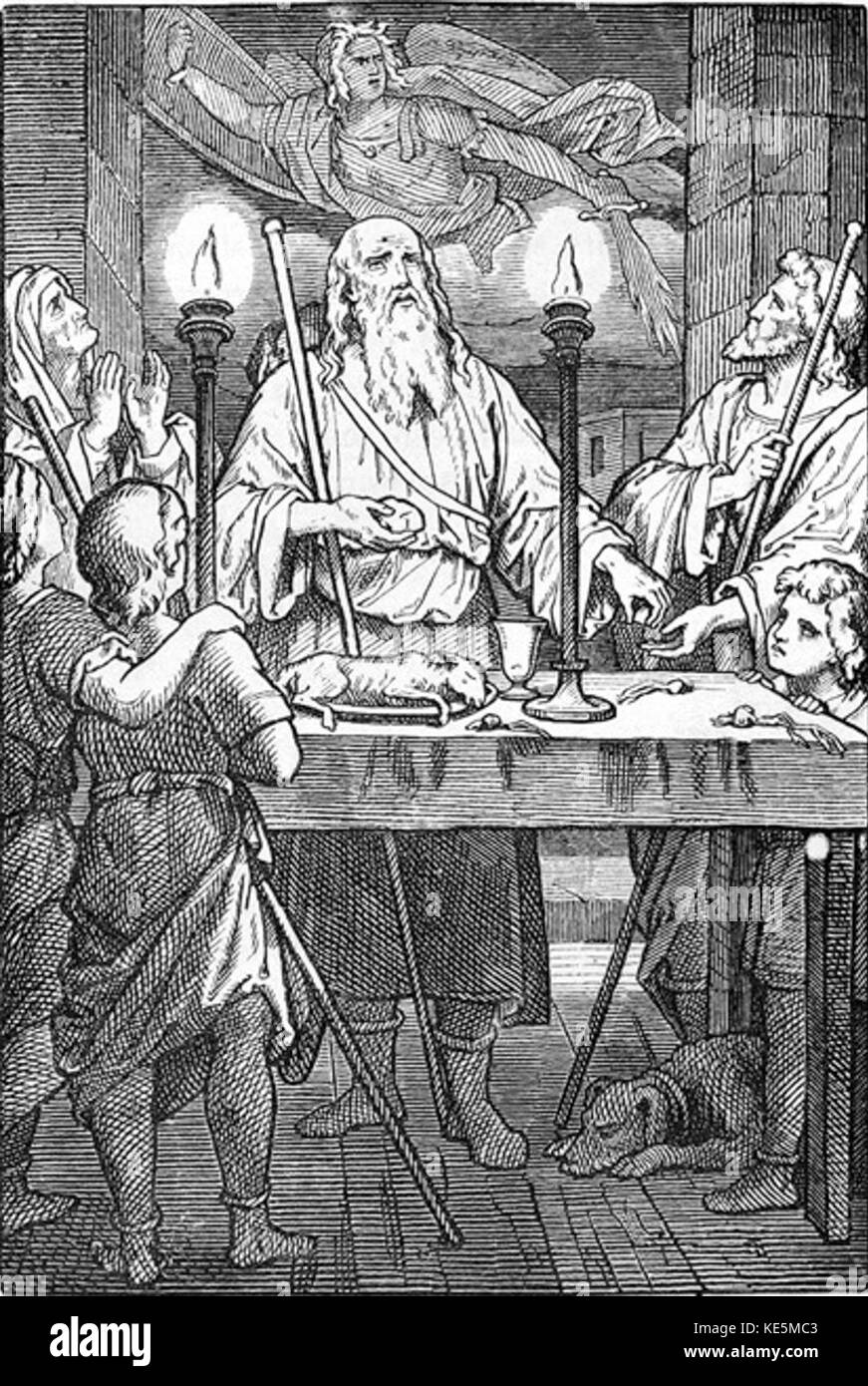 The feast of the passover Stock Photohttps://www.alamy.com/image-license-details/?v=1https://www.alamy.com/stock-image-the-feast-of-the-passover-163624275.html
The feast of the passover Stock Photohttps://www.alamy.com/image-license-details/?v=1https://www.alamy.com/stock-image-the-feast-of-the-passover-163624275.htmlRMKE5MC3–The feast of the passover
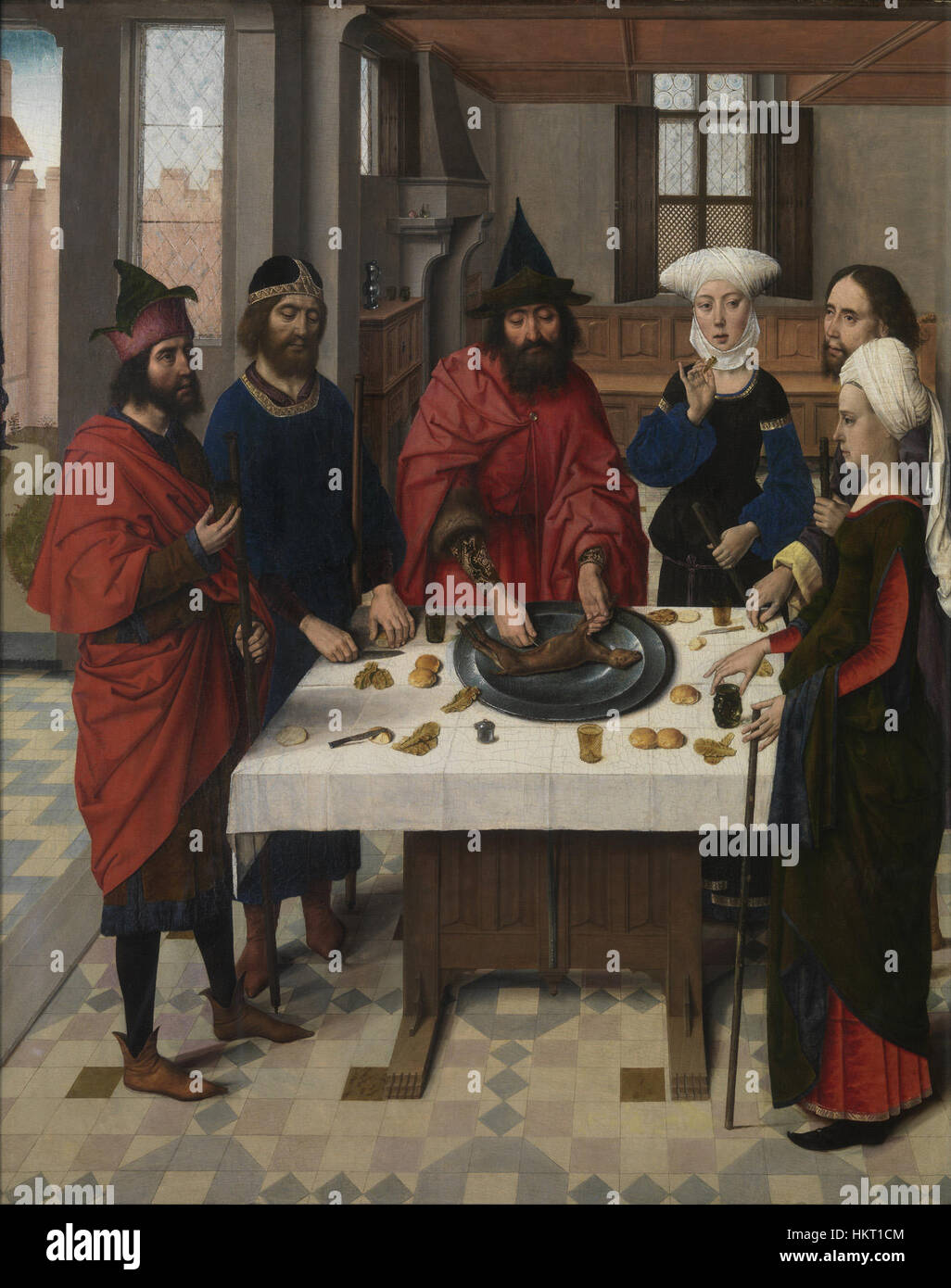 Dieric Bouts - The Feast of the Passover - WGA03013 Stock Photohttps://www.alamy.com/image-license-details/?v=1https://www.alamy.com/stock-photo-dieric-bouts-the-feast-of-the-passover-wga03013-132679028.html
Dieric Bouts - The Feast of the Passover - WGA03013 Stock Photohttps://www.alamy.com/image-license-details/?v=1https://www.alamy.com/stock-photo-dieric-bouts-the-feast-of-the-passover-wga03013-132679028.htmlRMHKT1CM–Dieric Bouts - The Feast of the Passover - WGA03013
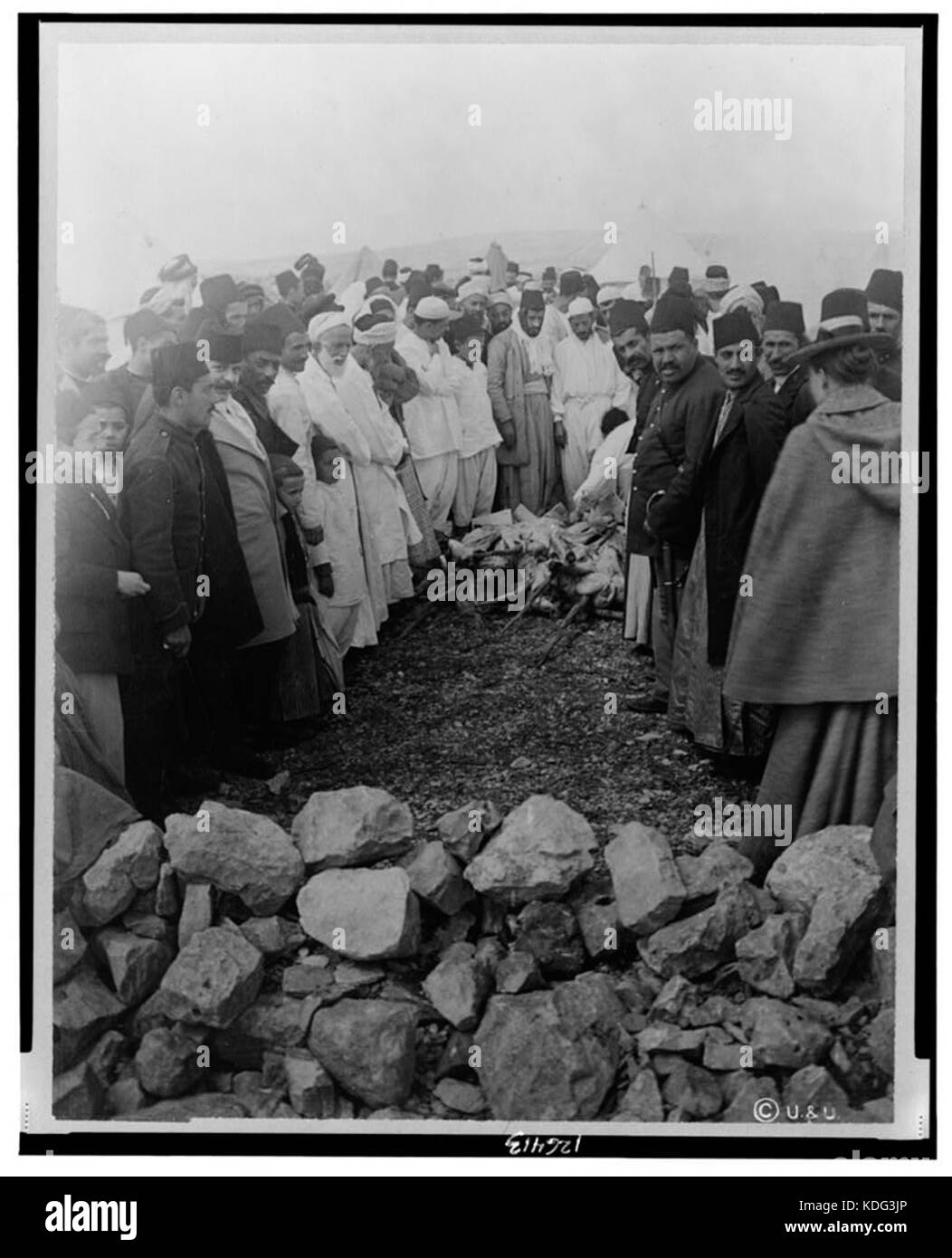 Palestine Mt. Gerizin (ie. Gerizim) Feast of the Passover LCCN00651203 Stock Photohttps://www.alamy.com/image-license-details/?v=1https://www.alamy.com/stock-image-palestine-mt-gerizin-ie-gerizim-feast-of-the-passover-lccn00651203-163237950.html
Palestine Mt. Gerizin (ie. Gerizim) Feast of the Passover LCCN00651203 Stock Photohttps://www.alamy.com/image-license-details/?v=1https://www.alamy.com/stock-image-palestine-mt-gerizin-ie-gerizim-feast-of-the-passover-lccn00651203-163237950.htmlRMKDG3JP–Palestine Mt. Gerizin (ie. Gerizim) Feast of the Passover LCCN00651203
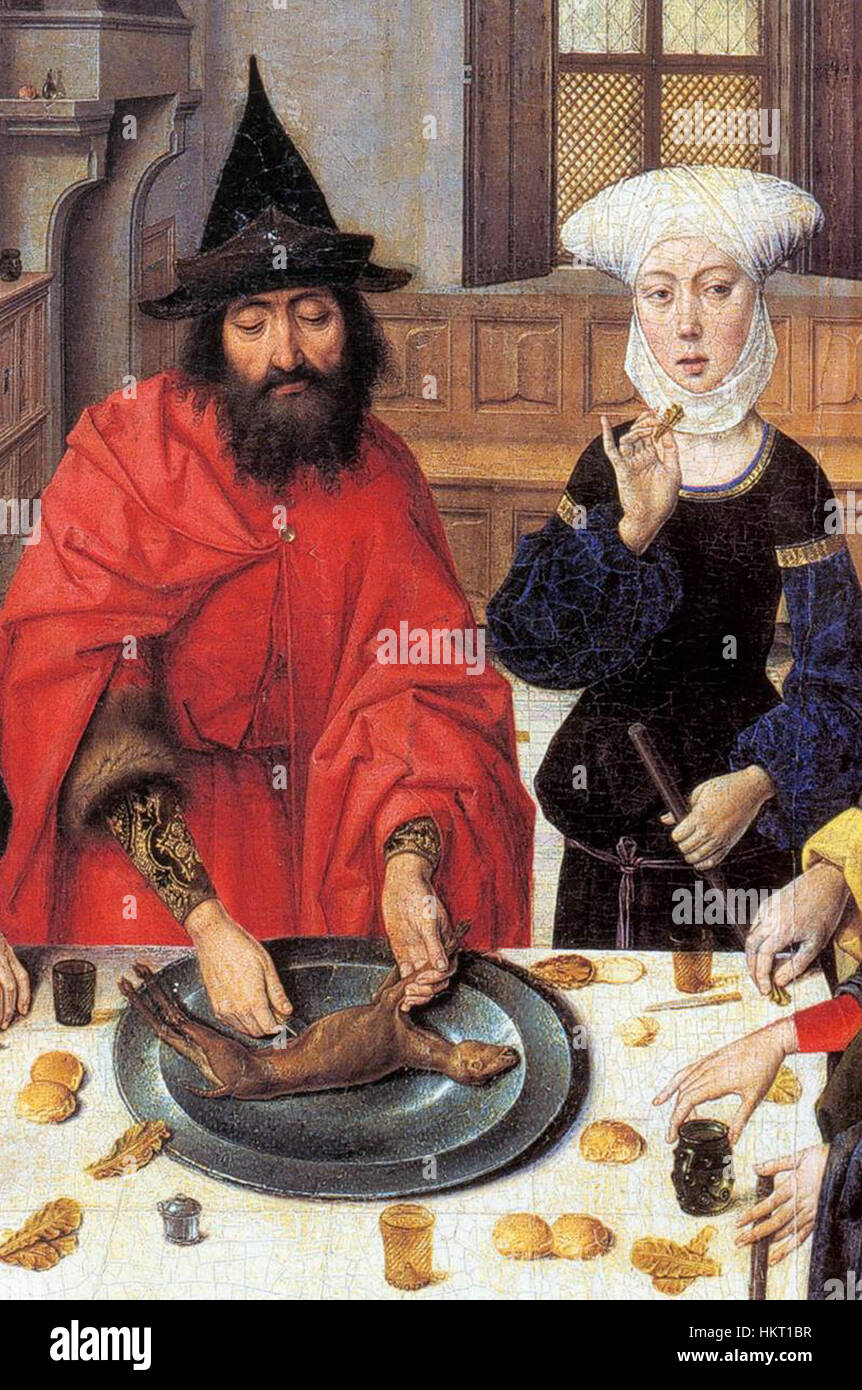 Dieric Bouts - The Feast of the Passover (detail) - WGA03014 Stock Photohttps://www.alamy.com/image-license-details/?v=1https://www.alamy.com/stock-photo-dieric-bouts-the-feast-of-the-passover-detail-wga03014-132679003.html
Dieric Bouts - The Feast of the Passover (detail) - WGA03014 Stock Photohttps://www.alamy.com/image-license-details/?v=1https://www.alamy.com/stock-photo-dieric-bouts-the-feast-of-the-passover-detail-wga03014-132679003.htmlRMHKT1BR–Dieric Bouts - The Feast of the Passover (detail) - WGA03014
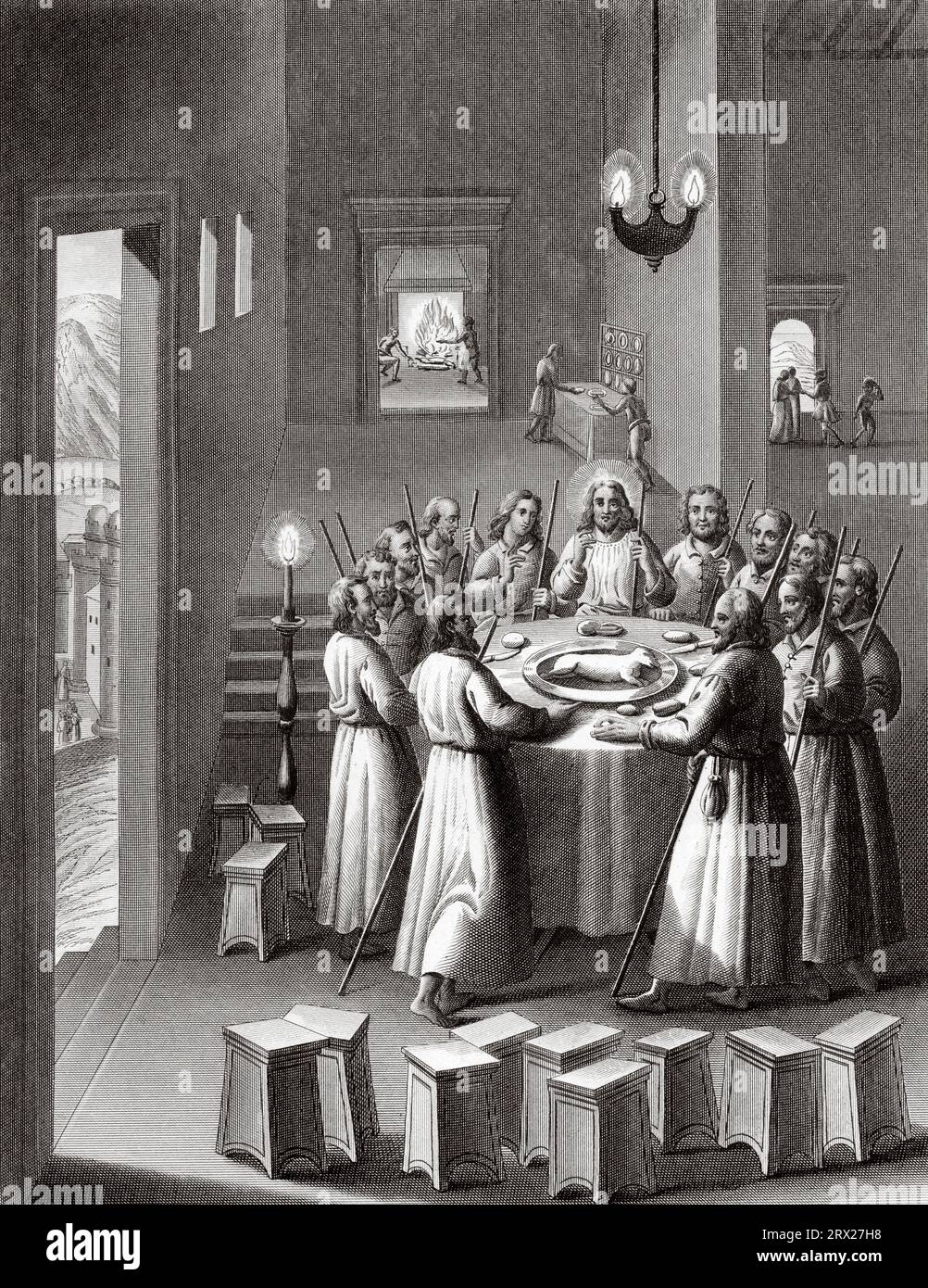 Jesus eating the Passover lamb with his disciples. Illustration for The life of Our Lord Jesus Christ written by the four evangelists, 1853 Stock Photohttps://www.alamy.com/image-license-details/?v=1https://www.alamy.com/jesus-eating-the-passover-lamb-with-his-disciples-illustration-for-the-life-of-our-lord-jesus-christ-written-by-the-four-evangelists-1853-image566762708.html
Jesus eating the Passover lamb with his disciples. Illustration for The life of Our Lord Jesus Christ written by the four evangelists, 1853 Stock Photohttps://www.alamy.com/image-license-details/?v=1https://www.alamy.com/jesus-eating-the-passover-lamb-with-his-disciples-illustration-for-the-life-of-our-lord-jesus-christ-written-by-the-four-evangelists-1853-image566762708.htmlRM2RX27H8–Jesus eating the Passover lamb with his disciples. Illustration for The life of Our Lord Jesus Christ written by the four evangelists, 1853
 Celebrate the festival of Passover with this beautiful background featuring the Menorah, matzo, red wine set against a patterned design. Vector Stock Vectorhttps://www.alamy.com/image-license-details/?v=1https://www.alamy.com/celebrate-the-festival-of-passover-with-this-beautiful-background-featuring-the-menorah-matzo-red-wine-set-against-a-patterned-design-vector-image543260044.html
Celebrate the festival of Passover with this beautiful background featuring the Menorah, matzo, red wine set against a patterned design. Vector Stock Vectorhttps://www.alamy.com/image-license-details/?v=1https://www.alamy.com/celebrate-the-festival-of-passover-with-this-beautiful-background-featuring-the-menorah-matzo-red-wine-set-against-a-patterned-design-vector-image543260044.htmlRF2PFRHMC–Celebrate the festival of Passover with this beautiful background featuring the Menorah, matzo, red wine set against a patterned design. Vector
 The roof top of the Upper room also called the Cenacle - this is where the room of the last supper is located in the building of the Tomb of David, Je Stock Photohttps://www.alamy.com/image-license-details/?v=1https://www.alamy.com/the-roof-top-of-the-upper-room-also-called-the-cenacle-this-is-where-the-room-of-the-last-supper-is-located-in-the-building-of-the-tomb-of-david-je-image608392468.html
The roof top of the Upper room also called the Cenacle - this is where the room of the last supper is located in the building of the Tomb of David, Je Stock Photohttps://www.alamy.com/image-license-details/?v=1https://www.alamy.com/the-roof-top-of-the-upper-room-also-called-the-cenacle-this-is-where-the-room-of-the-last-supper-is-located-in-the-building-of-the-tomb-of-david-je-image608392468.htmlRF2X9PJPC–The roof top of the Upper room also called the Cenacle - this is where the room of the last supper is located in the building of the Tomb of David, Je
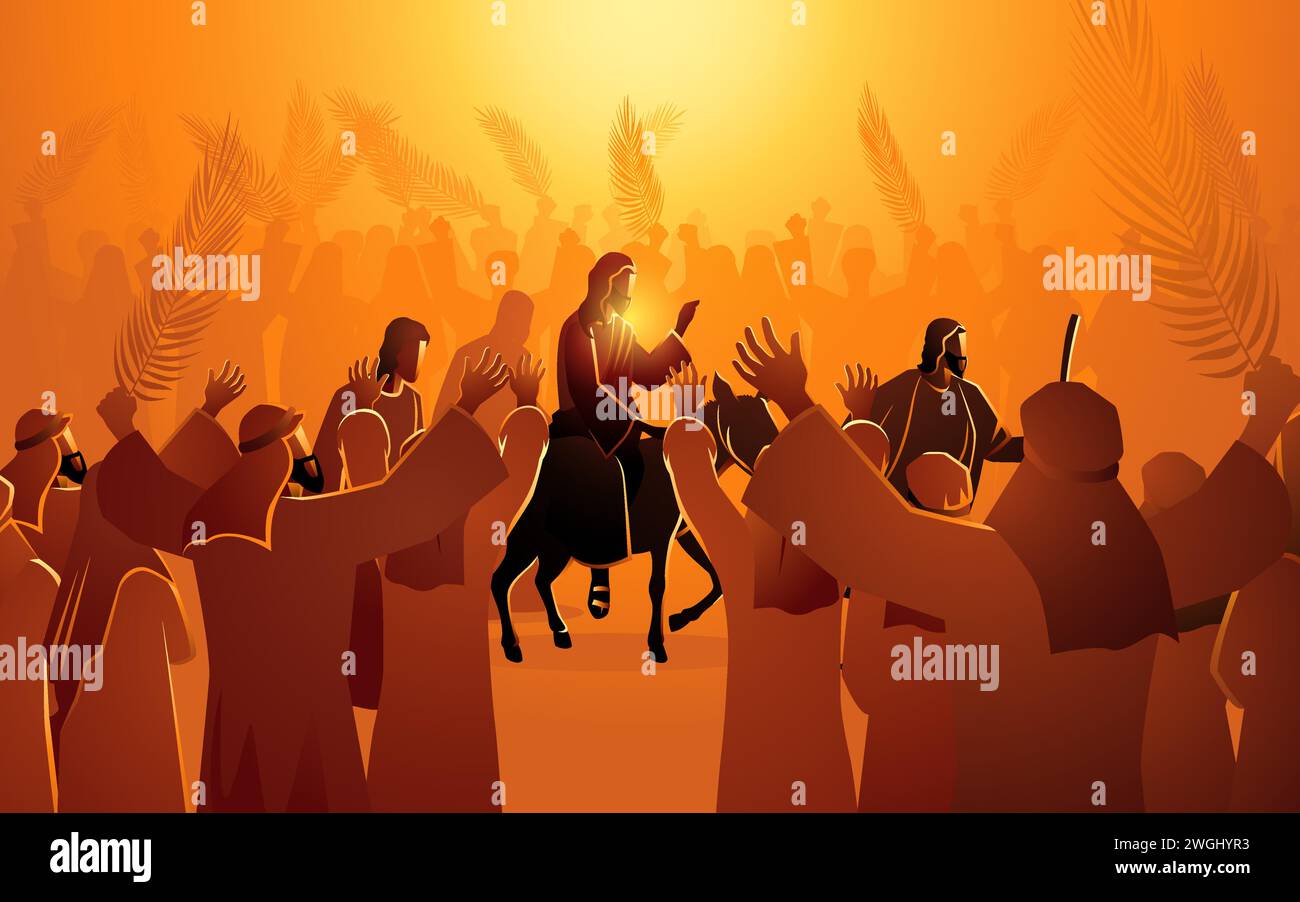 Biblical vector illustration series, Jesus comes to Jerusalem as King, Palm Sundays feast day Stock Vectorhttps://www.alamy.com/image-license-details/?v=1https://www.alamy.com/biblical-vector-illustration-series-jesus-comes-to-jerusalem-as-king-palm-sundays-feast-day-image595382007.html
Biblical vector illustration series, Jesus comes to Jerusalem as King, Palm Sundays feast day Stock Vectorhttps://www.alamy.com/image-license-details/?v=1https://www.alamy.com/biblical-vector-illustration-series-jesus-comes-to-jerusalem-as-king-palm-sundays-feast-day-image595382007.htmlRF2WGHYR3–Biblical vector illustration series, Jesus comes to Jerusalem as King, Palm Sundays feast day
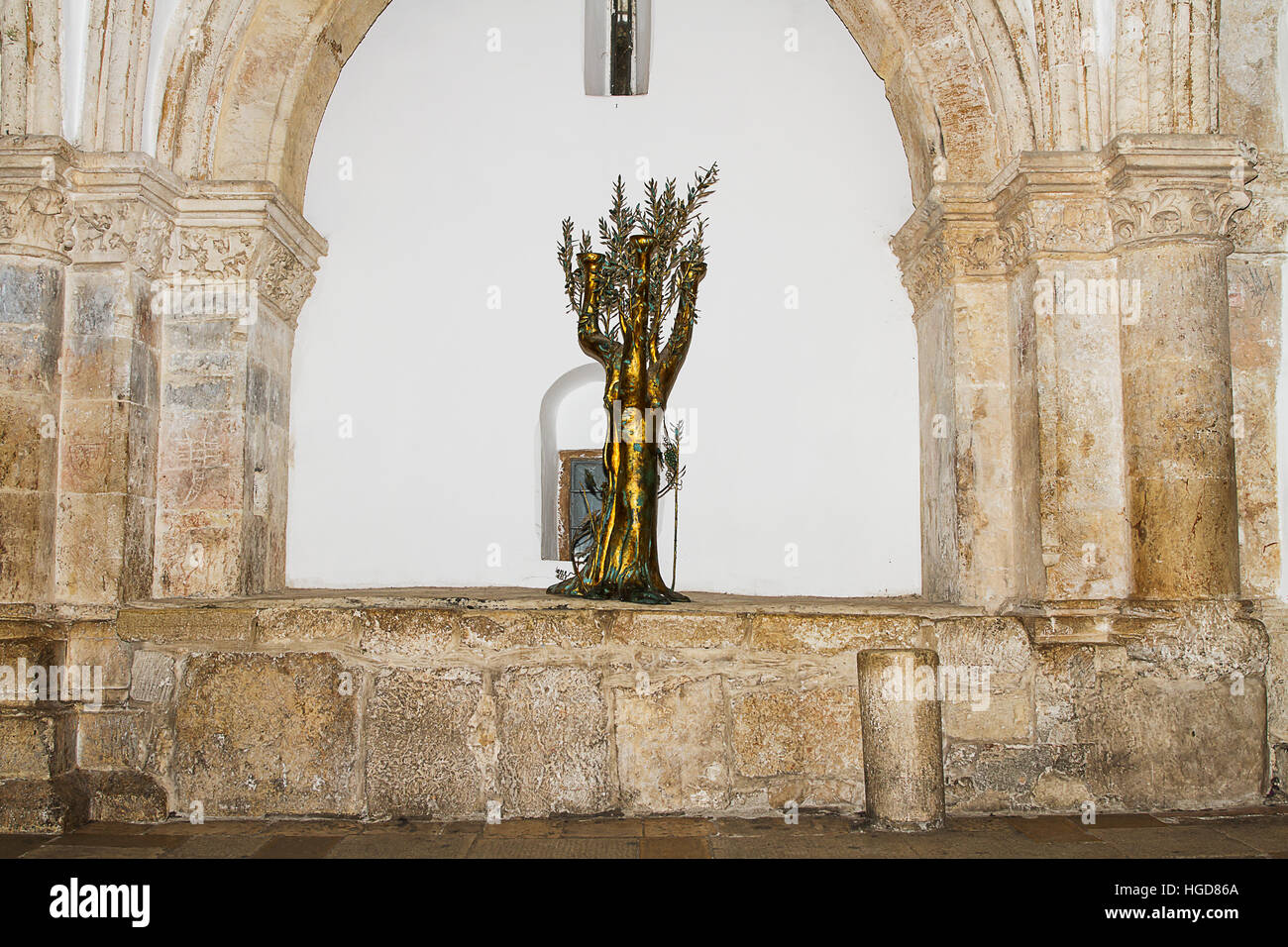 Cenacle (Room of the last supper) So according to tradition is this the place, where Jesus and his disciples held the Passover feast - the Last Supper Stock Photohttps://www.alamy.com/image-license-details/?v=1https://www.alamy.com/stock-photo-cenacle-room-of-the-last-supper-so-according-to-tradition-is-this-130598898.html
Cenacle (Room of the last supper) So according to tradition is this the place, where Jesus and his disciples held the Passover feast - the Last Supper Stock Photohttps://www.alamy.com/image-license-details/?v=1https://www.alamy.com/stock-photo-cenacle-room-of-the-last-supper-so-according-to-tradition-is-this-130598898.htmlRFHGD86A–Cenacle (Room of the last supper) So according to tradition is this the place, where Jesus and his disciples held the Passover feast - the Last Supper
 Print engraving c1880s showing Jesus Christ, aged just 12, in the Temple at Jerusalem discoursing with the elders. Stock Photohttps://www.alamy.com/image-license-details/?v=1https://www.alamy.com/stock-photo-print-engraving-c1880s-showing-jesus-christ-aged-just-12-in-the-temple-27777007.html
Print engraving c1880s showing Jesus Christ, aged just 12, in the Temple at Jerusalem discoursing with the elders. Stock Photohttps://www.alamy.com/image-license-details/?v=1https://www.alamy.com/stock-photo-print-engraving-c1880s-showing-jesus-christ-aged-just-12-in-the-temple-27777007.htmlRMBH59RY–Print engraving c1880s showing Jesus Christ, aged just 12, in the Temple at Jerusalem discoursing with the elders.
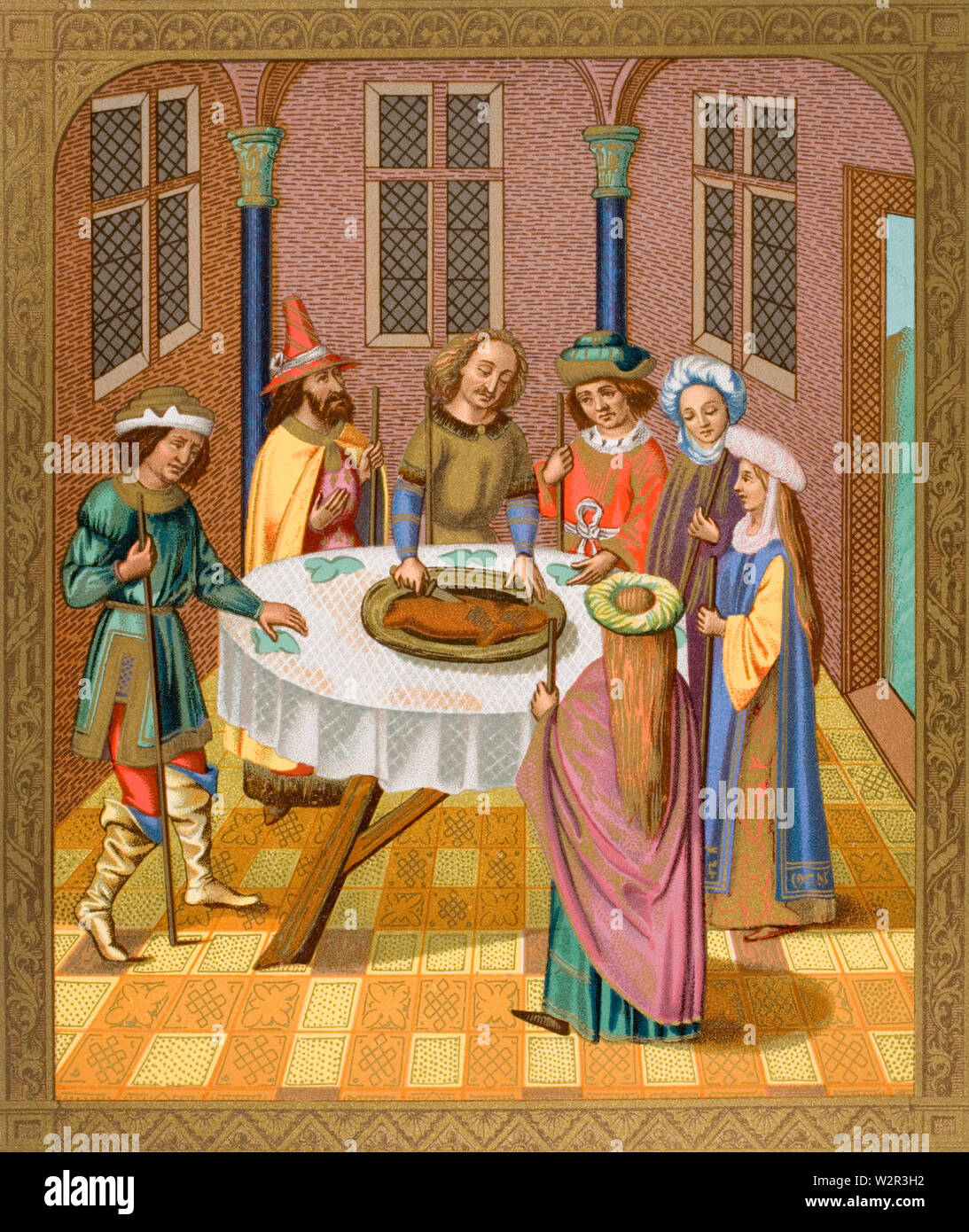 The Jews Passover. Facsimile of a miniature from a missel of the fifteenth century ornamented with painting of the school of Ven Eyck. Stock Photohttps://www.alamy.com/image-license-details/?v=1https://www.alamy.com/the-jews-passover-facsimile-of-a-miniature-from-a-missel-of-the-fifteenth-century-ornamented-with-painting-of-the-school-of-ven-eyck-image259892558.html
The Jews Passover. Facsimile of a miniature from a missel of the fifteenth century ornamented with painting of the school of Ven Eyck. Stock Photohttps://www.alamy.com/image-license-details/?v=1https://www.alamy.com/the-jews-passover-facsimile-of-a-miniature-from-a-missel-of-the-fifteenth-century-ornamented-with-painting-of-the-school-of-ven-eyck-image259892558.htmlRMW2R3H2–The Jews Passover. Facsimile of a miniature from a missel of the fifteenth century ornamented with painting of the school of Ven Eyck.
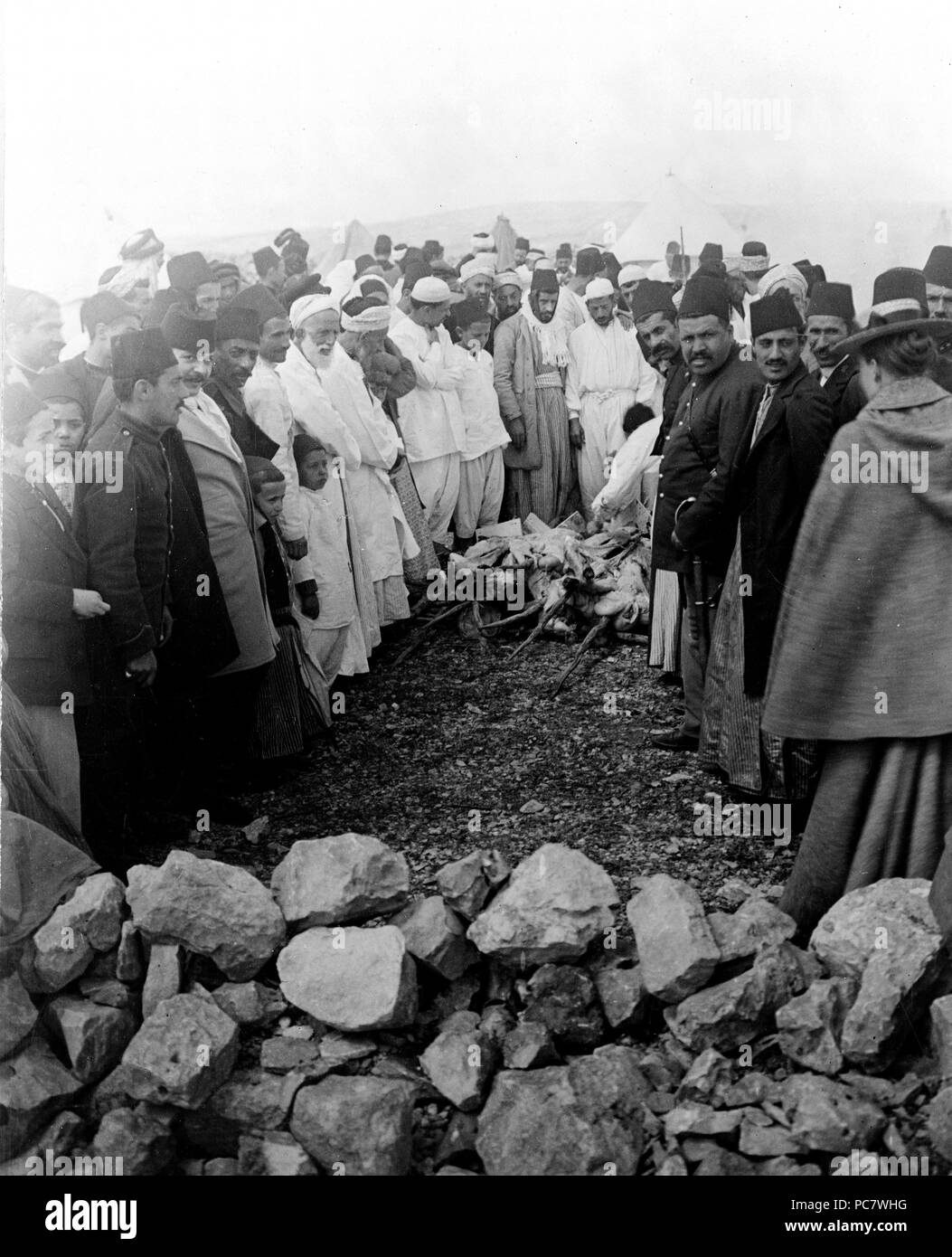 Samaritans around meat being cooked over open fire, Mount Gerizim, West Bank. Feast of the Passover 1880-1922 Stock Photohttps://www.alamy.com/image-license-details/?v=1https://www.alamy.com/samaritans-around-meat-being-cooked-over-open-fire-mount-gerizim-west-bank-feast-of-the-passover-1880-1922-image214074044.html
Samaritans around meat being cooked over open fire, Mount Gerizim, West Bank. Feast of the Passover 1880-1922 Stock Photohttps://www.alamy.com/image-license-details/?v=1https://www.alamy.com/samaritans-around-meat-being-cooked-over-open-fire-mount-gerizim-west-bank-feast-of-the-passover-1880-1922-image214074044.htmlRMPC7WHG–Samaritans around meat being cooked over open fire, Mount Gerizim, West Bank. Feast of the Passover 1880-1922
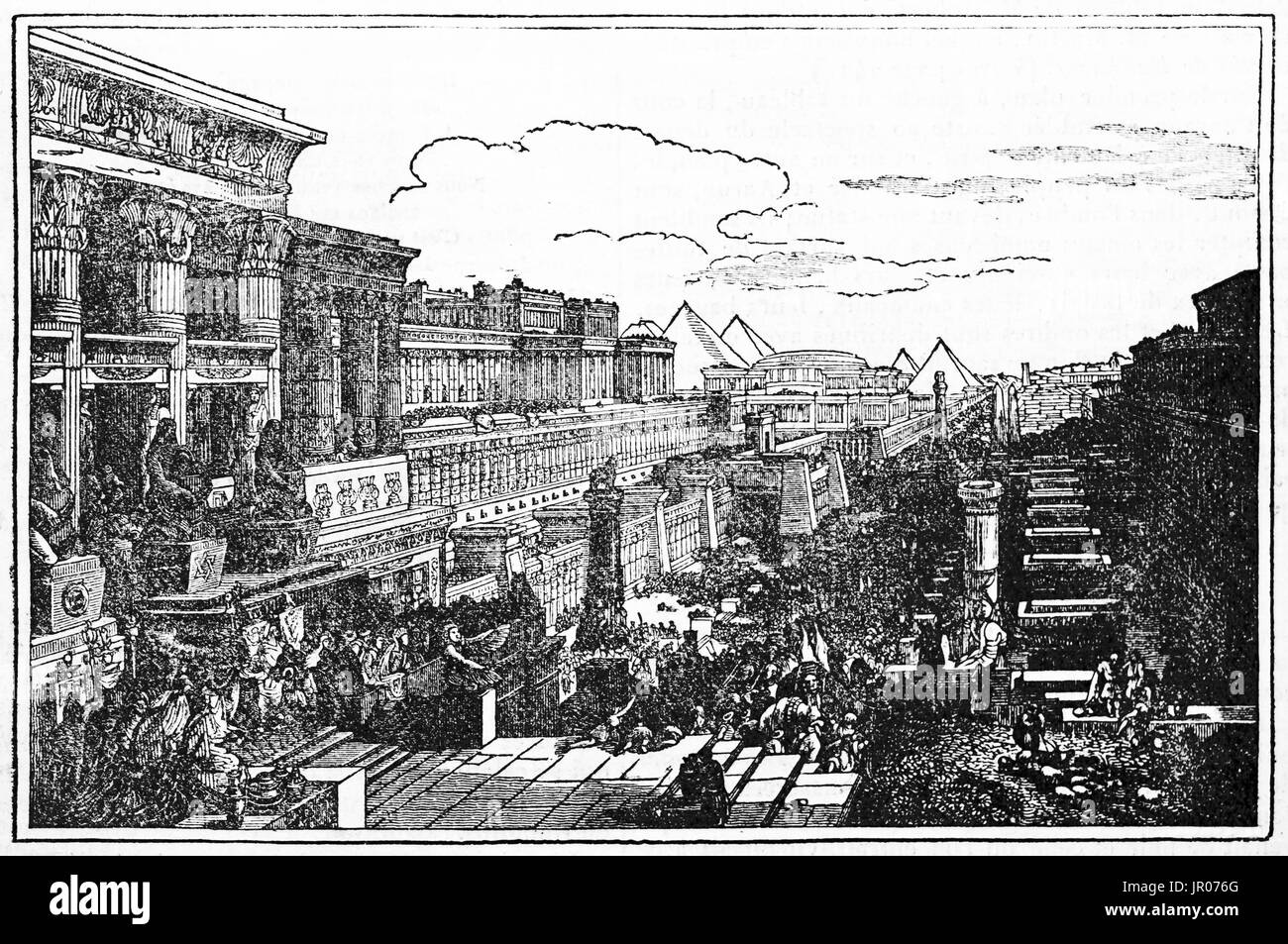 Old reproduction of a painting depicting The Exodus, departure of the Israelites from Egypt, founding myth of Israel. After David Roberts picture, pub Stock Photohttps://www.alamy.com/image-license-details/?v=1https://www.alamy.com/old-reproduction-of-a-painting-depicting-the-exodus-departure-of-the-image151825704.html
Old reproduction of a painting depicting The Exodus, departure of the Israelites from Egypt, founding myth of Israel. After David Roberts picture, pub Stock Photohttps://www.alamy.com/image-license-details/?v=1https://www.alamy.com/old-reproduction-of-a-painting-depicting-the-exodus-departure-of-the-image151825704.htmlRFJR076G–Old reproduction of a painting depicting The Exodus, departure of the Israelites from Egypt, founding myth of Israel. After David Roberts picture, pub
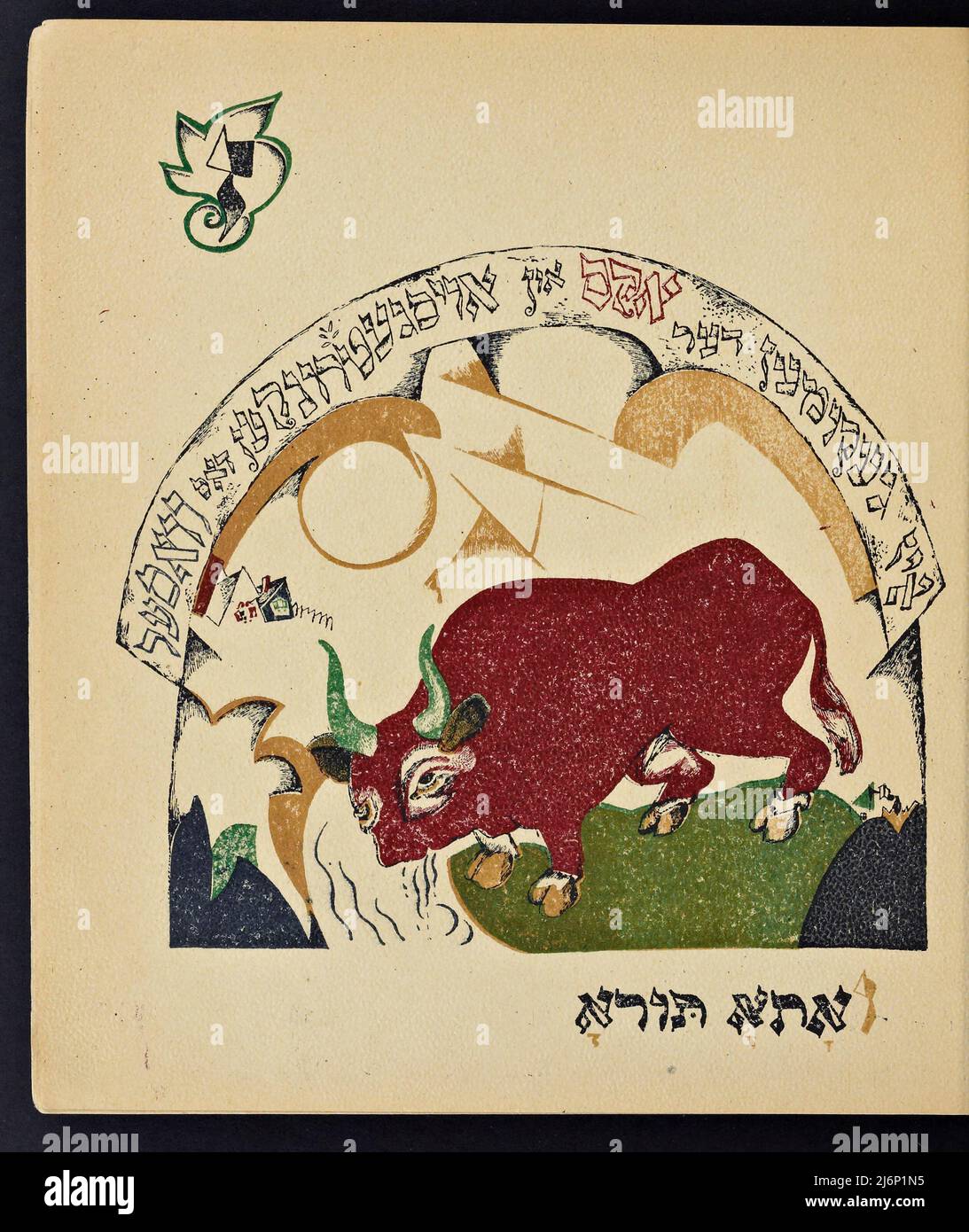 Illustrated Yiddish version of Had Gadya children's book illustrated by El Lissitzky (Lazar Markovich Lissitzky), and published in Kiev in 1919 Chad Gadya or Had Gadya ('one little goat, or 'one kid') is a playful cumulative song in Aramaic and Hebrew. It is sung at the end of the Passover Seder, the Jewish ritual feast that marks the beginning of the Jewish holiday of Passover. The melody may have its roots in Medieval German folk music. It first appeared in a Haggadah printed in Prague in 1590, which makes it the most recent inclusion in the traditional Passover seder liturgy Stock Photohttps://www.alamy.com/image-license-details/?v=1https://www.alamy.com/illustrated-yiddish-version-of-had-gadya-childrens-book-illustrated-by-el-lissitzky-lazar-markovich-lissitzky-and-published-in-kiev-in-1919-chad-gadya-or-had-gadya-one-little-goat-or-one-kid-is-a-playful-cumulative-song-in-aramaic-and-hebrew-it-is-sung-at-the-end-of-the-passover-seder-the-jewish-ritual-feast-that-marks-the-beginning-of-the-jewish-holiday-of-passover-the-melody-may-have-its-roots-in-medieval-german-folk-music-it-first-appeared-in-a-haggadah-printed-in-prague-in-1590-which-makes-it-the-most-recent-inclusion-in-the-traditional-passover-seder-liturgy-image468852193.html
Illustrated Yiddish version of Had Gadya children's book illustrated by El Lissitzky (Lazar Markovich Lissitzky), and published in Kiev in 1919 Chad Gadya or Had Gadya ('one little goat, or 'one kid') is a playful cumulative song in Aramaic and Hebrew. It is sung at the end of the Passover Seder, the Jewish ritual feast that marks the beginning of the Jewish holiday of Passover. The melody may have its roots in Medieval German folk music. It first appeared in a Haggadah printed in Prague in 1590, which makes it the most recent inclusion in the traditional Passover seder liturgy Stock Photohttps://www.alamy.com/image-license-details/?v=1https://www.alamy.com/illustrated-yiddish-version-of-had-gadya-childrens-book-illustrated-by-el-lissitzky-lazar-markovich-lissitzky-and-published-in-kiev-in-1919-chad-gadya-or-had-gadya-one-little-goat-or-one-kid-is-a-playful-cumulative-song-in-aramaic-and-hebrew-it-is-sung-at-the-end-of-the-passover-seder-the-jewish-ritual-feast-that-marks-the-beginning-of-the-jewish-holiday-of-passover-the-melody-may-have-its-roots-in-medieval-german-folk-music-it-first-appeared-in-a-haggadah-printed-in-prague-in-1590-which-makes-it-the-most-recent-inclusion-in-the-traditional-passover-seder-liturgy-image468852193.htmlRF2J6P1N5–Illustrated Yiddish version of Had Gadya children's book illustrated by El Lissitzky (Lazar Markovich Lissitzky), and published in Kiev in 1919 Chad Gadya or Had Gadya ('one little goat, or 'one kid') is a playful cumulative song in Aramaic and Hebrew. It is sung at the end of the Passover Seder, the Jewish ritual feast that marks the beginning of the Jewish holiday of Passover. The melody may have its roots in Medieval German folk music. It first appeared in a Haggadah printed in Prague in 1590, which makes it the most recent inclusion in the traditional Passover seder liturgy
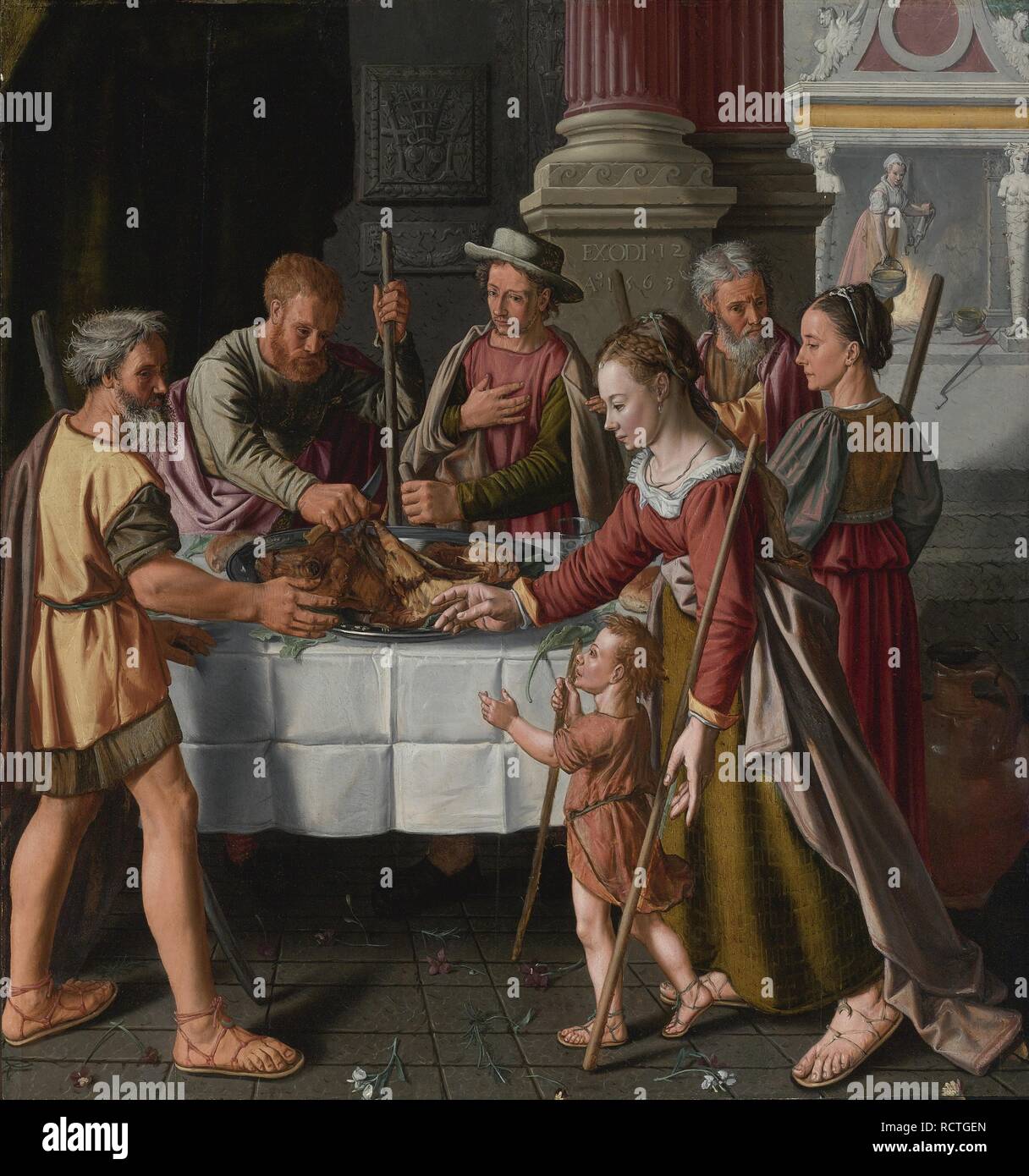 The First Passover Feast. Museum: PRIVATE COLLECTION. Author: Beuckelaer, Huybrecht. Stock Photohttps://www.alamy.com/image-license-details/?v=1https://www.alamy.com/the-first-passover-feast-museum-private-collection-author-beuckelaer-huybrecht-image231650461.html
The First Passover Feast. Museum: PRIVATE COLLECTION. Author: Beuckelaer, Huybrecht. Stock Photohttps://www.alamy.com/image-license-details/?v=1https://www.alamy.com/the-first-passover-feast-museum-private-collection-author-beuckelaer-huybrecht-image231650461.htmlRMRCTGEN–The First Passover Feast. Museum: PRIVATE COLLECTION. Author: Beuckelaer, Huybrecht.
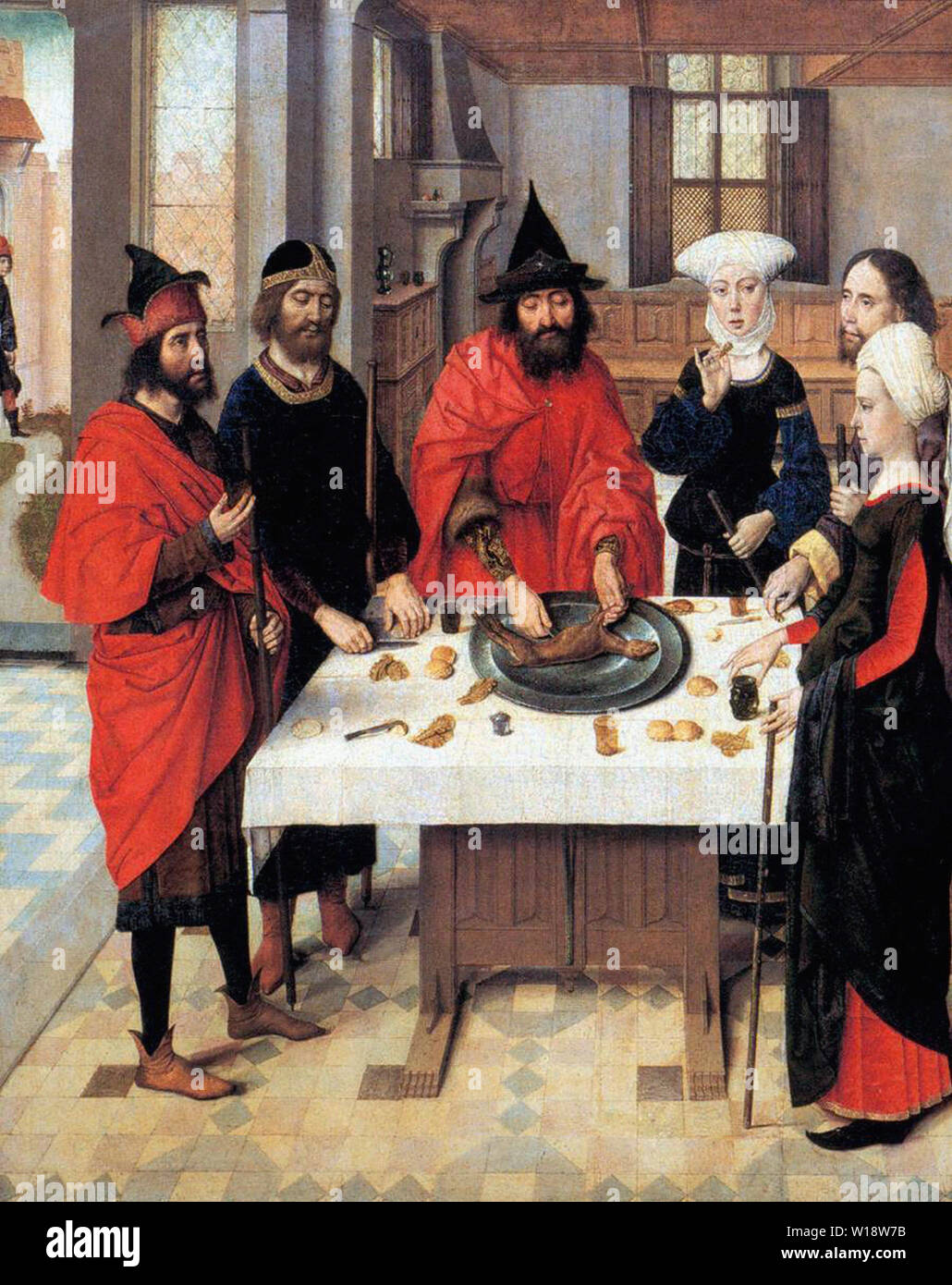 Dieric Bouts - Feast Passover Winged Altar St Peter Leuven C 1465 Stock Photohttps://www.alamy.com/image-license-details/?v=1https://www.alamy.com/dieric-bouts-feast-passover-winged-altar-st-peter-leuven-c-1465-image258965599.html
Dieric Bouts - Feast Passover Winged Altar St Peter Leuven C 1465 Stock Photohttps://www.alamy.com/image-license-details/?v=1https://www.alamy.com/dieric-bouts-feast-passover-winged-altar-st-peter-leuven-c-1465-image258965599.htmlRMW18W7B–Dieric Bouts - Feast Passover Winged Altar St Peter Leuven C 1465
 Religious Stock Photohttps://www.alamy.com/image-license-details/?v=1https://www.alamy.com/religious-image5354364.html
Religious Stock Photohttps://www.alamy.com/image-license-details/?v=1https://www.alamy.com/religious-image5354364.htmlRFATWR7D–Religious
 seder Stock Photohttps://www.alamy.com/image-license-details/?v=1https://www.alamy.com/stock-photo-seder-25771038.html
seder Stock Photohttps://www.alamy.com/image-license-details/?v=1https://www.alamy.com/stock-photo-seder-25771038.htmlRFBDWY66–seder
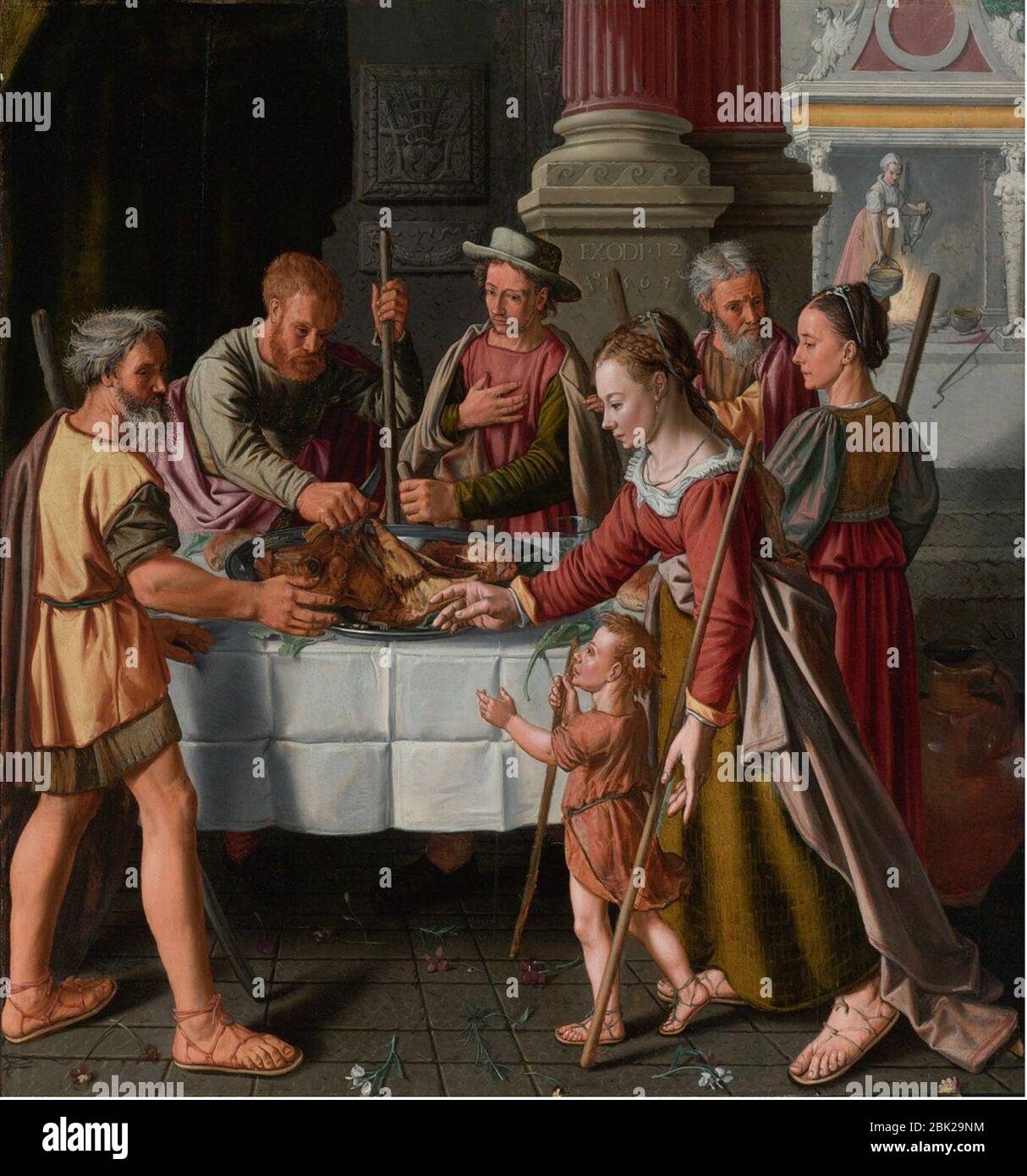 Huybrecht Beuckelaer - The first Passover feast. Stock Photohttps://www.alamy.com/image-license-details/?v=1https://www.alamy.com/huybrecht-beuckelaer-the-first-passover-feast-image355937392.html
Huybrecht Beuckelaer - The first Passover feast. Stock Photohttps://www.alamy.com/image-license-details/?v=1https://www.alamy.com/huybrecht-beuckelaer-the-first-passover-feast-image355937392.htmlRM2BK29NM–Huybrecht Beuckelaer - The first Passover feast.
 . The Saturday magazine . m THE SATURDAY MAGAZINE. [April 6, THE PASSOVER, AS CKLEBRATED BY THK MODERN JEWS. An account of the manner in which the modem Jewscelebrate the Passover, at all times interesting, ispeculiarly appropriate at the present season of Easter.Our narration is taken from Allens Modern Judaism,in which is to be found a very full history of the sen-timents and observances of that extraordinary people. The Feast of the Passover begins on the fifteenthday of their month Nisan, and continues, with thoseJews who live in or near Jerusalem, seven days 3 andwith those in all other p Stock Photohttps://www.alamy.com/image-license-details/?v=1https://www.alamy.com/the-saturday-magazine-m-the-saturday-magazine-april-6-the-passover-as-cklebrated-by-thk-modern-jews-an-account-of-the-manner-in-which-the-modem-jewscelebrate-the-passover-at-all-times-interesting-ispeculiarly-appropriate-at-the-present-season-of-easterour-narration-is-taken-from-allens-modern-judaismin-which-is-to-be-found-a-very-full-history-of-the-sen-timents-and-observances-of-that-extraordinary-people-the-feast-of-the-passover-begins-on-the-fifteenthday-of-their-month-nisan-and-continues-with-thosejews-who-live-in-or-near-jerusalem-seven-days-3-andwith-those-in-all-other-p-image370046423.html
. The Saturday magazine . m THE SATURDAY MAGAZINE. [April 6, THE PASSOVER, AS CKLEBRATED BY THK MODERN JEWS. An account of the manner in which the modem Jewscelebrate the Passover, at all times interesting, ispeculiarly appropriate at the present season of Easter.Our narration is taken from Allens Modern Judaism,in which is to be found a very full history of the sen-timents and observances of that extraordinary people. The Feast of the Passover begins on the fifteenthday of their month Nisan, and continues, with thoseJews who live in or near Jerusalem, seven days 3 andwith those in all other p Stock Photohttps://www.alamy.com/image-license-details/?v=1https://www.alamy.com/the-saturday-magazine-m-the-saturday-magazine-april-6-the-passover-as-cklebrated-by-thk-modern-jews-an-account-of-the-manner-in-which-the-modem-jewscelebrate-the-passover-at-all-times-interesting-ispeculiarly-appropriate-at-the-present-season-of-easterour-narration-is-taken-from-allens-modern-judaismin-which-is-to-be-found-a-very-full-history-of-the-sen-timents-and-observances-of-that-extraordinary-people-the-feast-of-the-passover-begins-on-the-fifteenthday-of-their-month-nisan-and-continues-with-thosejews-who-live-in-or-near-jerusalem-seven-days-3-andwith-those-in-all-other-p-image370046423.htmlRM2CE11YK–. The Saturday magazine . m THE SATURDAY MAGAZINE. [April 6, THE PASSOVER, AS CKLEBRATED BY THK MODERN JEWS. An account of the manner in which the modem Jewscelebrate the Passover, at all times interesting, ispeculiarly appropriate at the present season of Easter.Our narration is taken from Allens Modern Judaism,in which is to be found a very full history of the sen-timents and observances of that extraordinary people. The Feast of the Passover begins on the fifteenthday of their month Nisan, and continues, with thoseJews who live in or near Jerusalem, seven days 3 andwith those in all other p
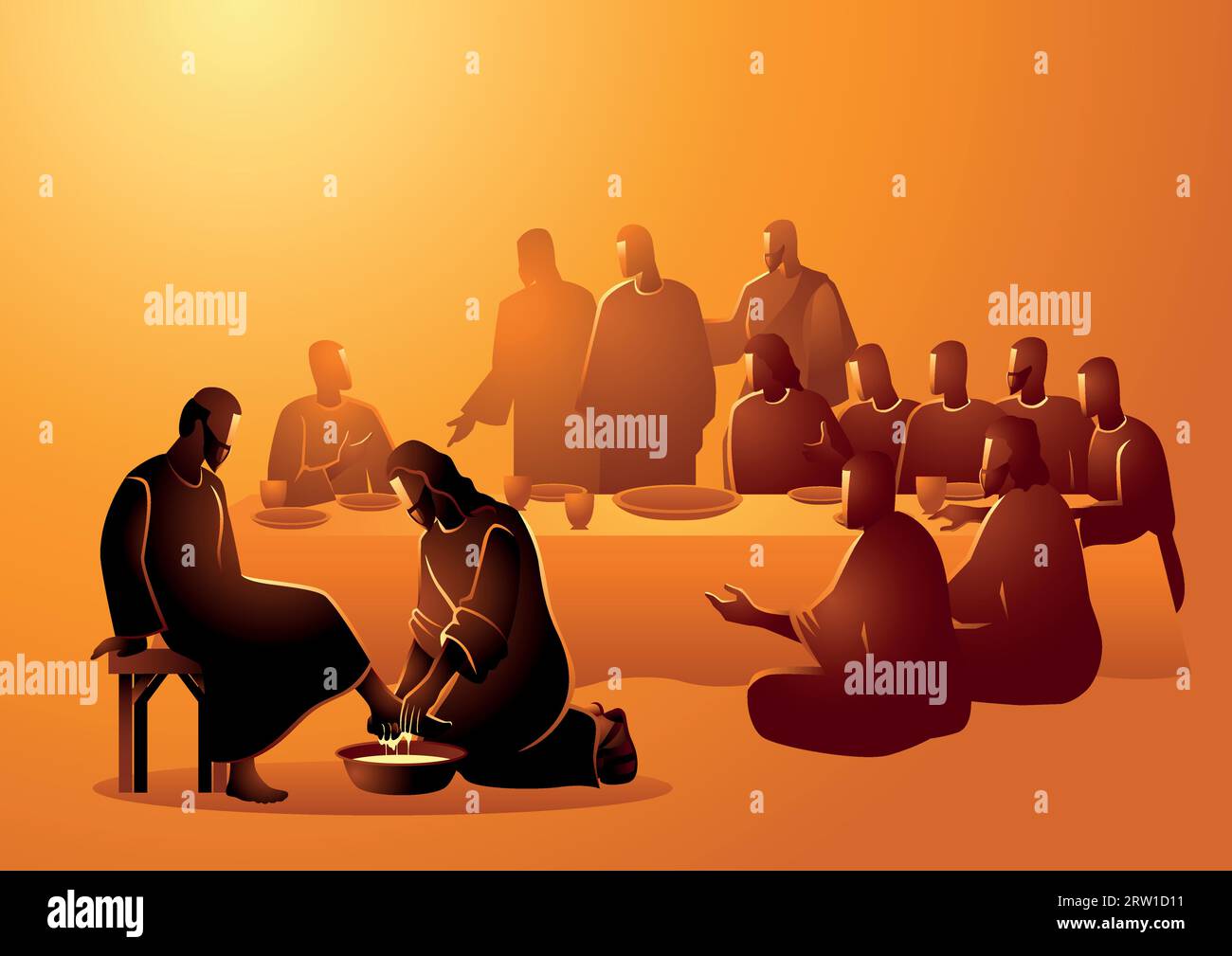 Biblical vector illustration series, Jesus washing apostles feet Stock Vectorhttps://www.alamy.com/image-license-details/?v=1https://www.alamy.com/biblical-vector-illustration-series-jesus-washing-apostles-feet-image566130349.html
Biblical vector illustration series, Jesus washing apostles feet Stock Vectorhttps://www.alamy.com/image-license-details/?v=1https://www.alamy.com/biblical-vector-illustration-series-jesus-washing-apostles-feet-image566130349.htmlRF2RW1D11–Biblical vector illustration series, Jesus washing apostles feet
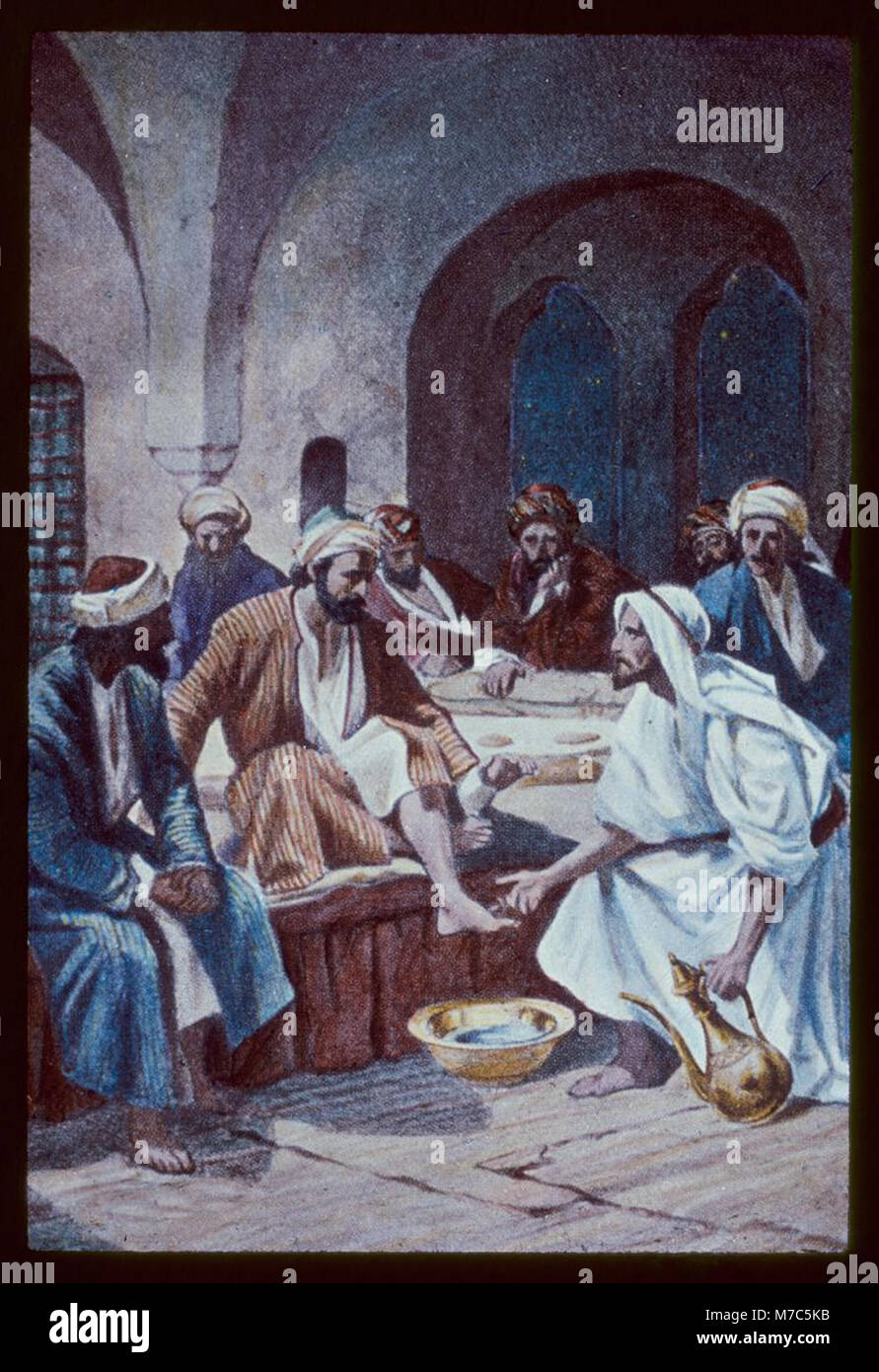 John 13-1-10. Jesus, with the twelve, partaketh of the passover feast in an upper chamber. He teacheth humility by washing the disciples' feet LOC matpc.23138 Stock Photohttps://www.alamy.com/image-license-details/?v=1https://www.alamy.com/stock-photo-john-13-1-10-jesus-with-the-twelve-partaketh-of-the-passover-feast-176674159.html
John 13-1-10. Jesus, with the twelve, partaketh of the passover feast in an upper chamber. He teacheth humility by washing the disciples' feet LOC matpc.23138 Stock Photohttps://www.alamy.com/image-license-details/?v=1https://www.alamy.com/stock-photo-john-13-1-10-jesus-with-the-twelve-partaketh-of-the-passover-feast-176674159.htmlRMM7C5KB–John 13-1-10. Jesus, with the twelve, partaketh of the passover feast in an upper chamber. He teacheth humility by washing the disciples' feet LOC matpc.23138
 Biblical vector illustration series, Jesus washing apostles feet Stock Vectorhttps://www.alamy.com/image-license-details/?v=1https://www.alamy.com/biblical-vector-illustration-series-jesus-washing-apostles-feet-image466603383.html
Biblical vector illustration series, Jesus washing apostles feet Stock Vectorhttps://www.alamy.com/image-license-details/?v=1https://www.alamy.com/biblical-vector-illustration-series-jesus-washing-apostles-feet-image466603383.htmlRF2J33HAF–Biblical vector illustration series, Jesus washing apostles feet
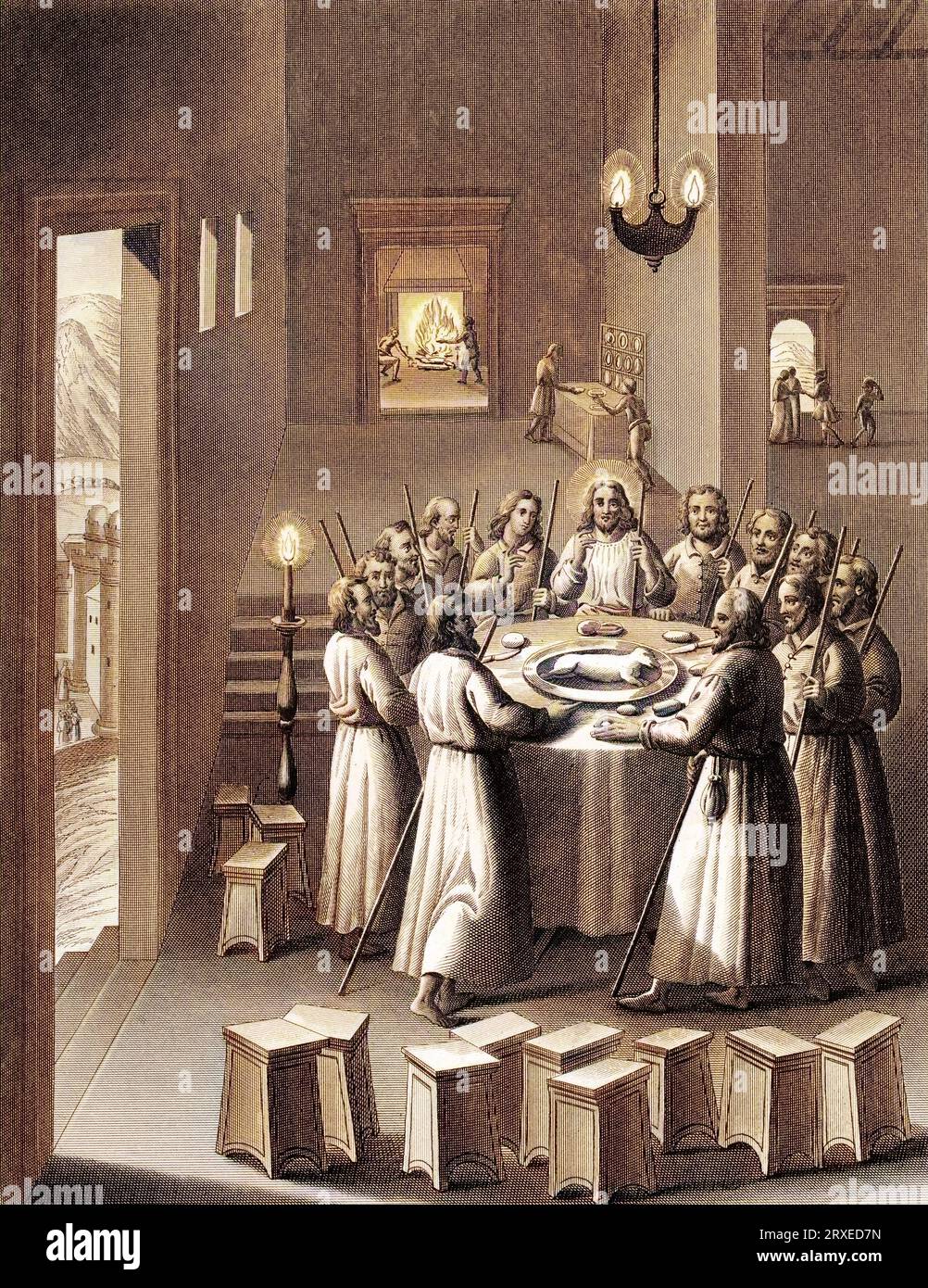 Jesus eating the Passover lamb with his disciples. Colored Illustration for The life of Our Lord Jesus Christ written by the four evangelists, 1853 Stock Photohttps://www.alamy.com/image-license-details/?v=1https://www.alamy.com/jesus-eating-the-passover-lamb-with-his-disciples-colored-illustration-for-the-life-of-our-lord-jesus-christ-written-by-the-four-evangelists-1853-image567030569.html
Jesus eating the Passover lamb with his disciples. Colored Illustration for The life of Our Lord Jesus Christ written by the four evangelists, 1853 Stock Photohttps://www.alamy.com/image-license-details/?v=1https://www.alamy.com/jesus-eating-the-passover-lamb-with-his-disciples-colored-illustration-for-the-life-of-our-lord-jesus-christ-written-by-the-four-evangelists-1853-image567030569.htmlRM2RXED7N–Jesus eating the Passover lamb with his disciples. Colored Illustration for The life of Our Lord Jesus Christ written by the four evangelists, 1853
 Celebrate the joyous occasion of Passover with this festive background featuring candles, matzah, and red wine amidst a beautiful patterned design Stock Vectorhttps://www.alamy.com/image-license-details/?v=1https://www.alamy.com/celebrate-the-joyous-occasion-of-passover-with-this-festive-background-featuring-candles-matzah-and-red-wine-amidst-a-beautiful-patterned-design-image543184373.html
Celebrate the joyous occasion of Passover with this festive background featuring candles, matzah, and red wine amidst a beautiful patterned design Stock Vectorhttps://www.alamy.com/image-license-details/?v=1https://www.alamy.com/celebrate-the-joyous-occasion-of-passover-with-this-festive-background-featuring-candles-matzah-and-red-wine-amidst-a-beautiful-patterned-design-image543184373.htmlRF2PFM55W–Celebrate the joyous occasion of Passover with this festive background featuring candles, matzah, and red wine amidst a beautiful patterned design
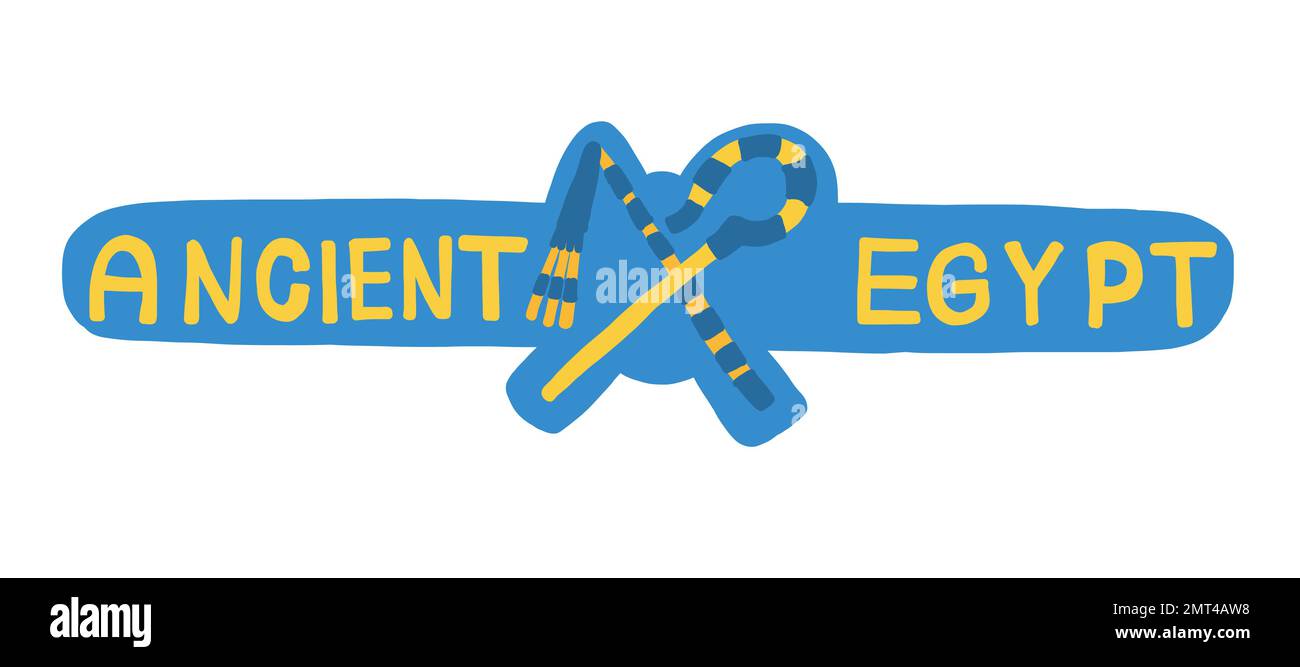 Ancient Egypt title. Egyptian ancient power symbols stick and scourge isolated on white background Stock Vectorhttps://www.alamy.com/image-license-details/?v=1https://www.alamy.com/ancient-egypt-title-egyptian-ancient-power-symbols-stick-and-scourge-isolated-on-white-background-image513948772.html
Ancient Egypt title. Egyptian ancient power symbols stick and scourge isolated on white background Stock Vectorhttps://www.alamy.com/image-license-details/?v=1https://www.alamy.com/ancient-egypt-title-egyptian-ancient-power-symbols-stick-and-scourge-isolated-on-white-background-image513948772.htmlRF2MT4AW8–Ancient Egypt title. Egyptian ancient power symbols stick and scourge isolated on white background
RF2PFRHCG–Passover holiday. Beautiful background features the iconic symbols of the Menorah and Star of David set against an intricate patterned design. Vector
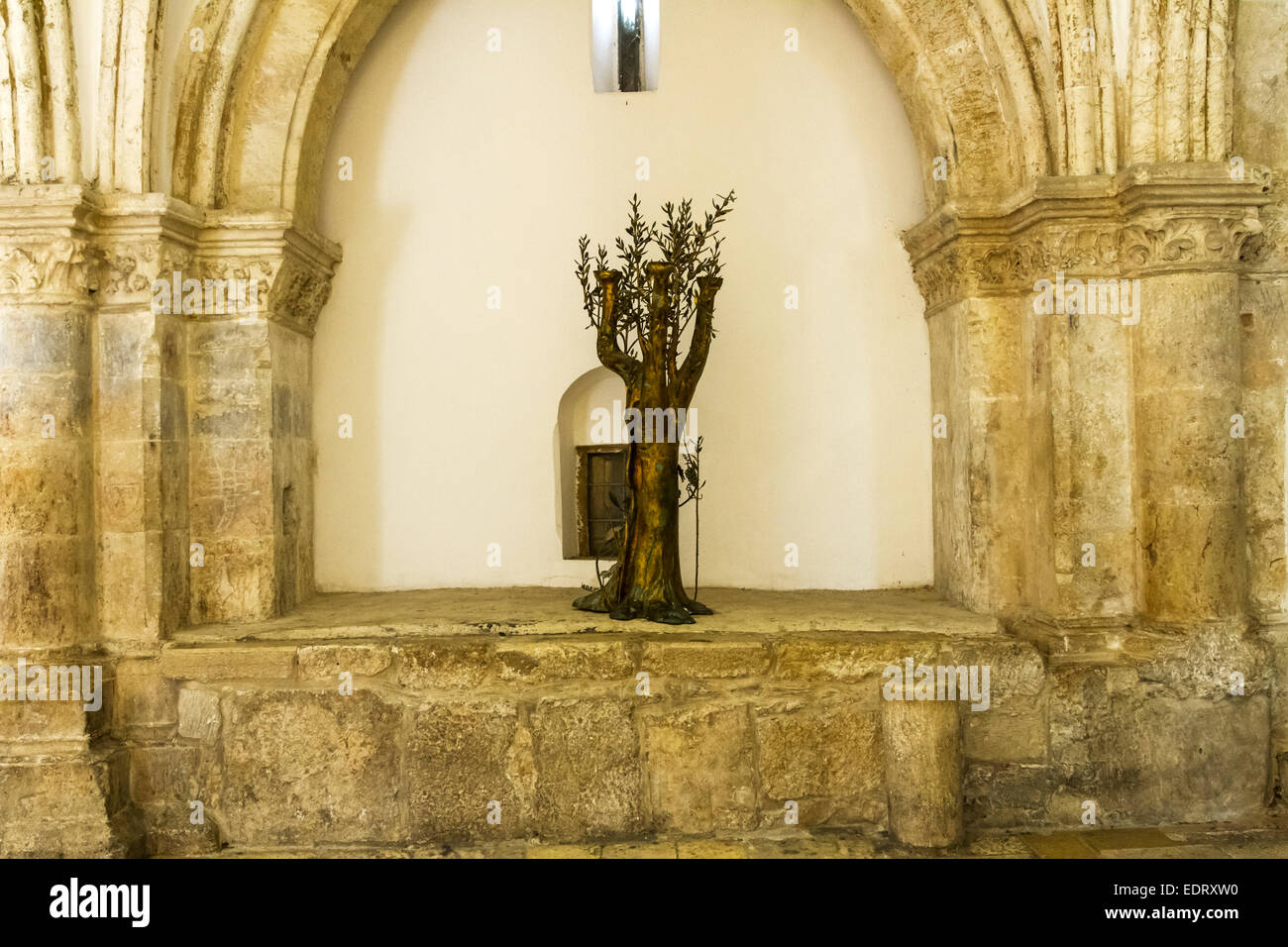 Cenacle (Room of the last supper) So according to tradition is this the place, where Jesus and his disciples held the Passover f Stock Photohttps://www.alamy.com/image-license-details/?v=1https://www.alamy.com/stock-photo-cenacle-room-of-the-last-supper-so-according-to-tradition-is-this-77357980.html
Cenacle (Room of the last supper) So according to tradition is this the place, where Jesus and his disciples held the Passover f Stock Photohttps://www.alamy.com/image-license-details/?v=1https://www.alamy.com/stock-photo-cenacle-room-of-the-last-supper-so-according-to-tradition-is-this-77357980.htmlRFEDRXW0–Cenacle (Room of the last supper) So according to tradition is this the place, where Jesus and his disciples held the Passover f
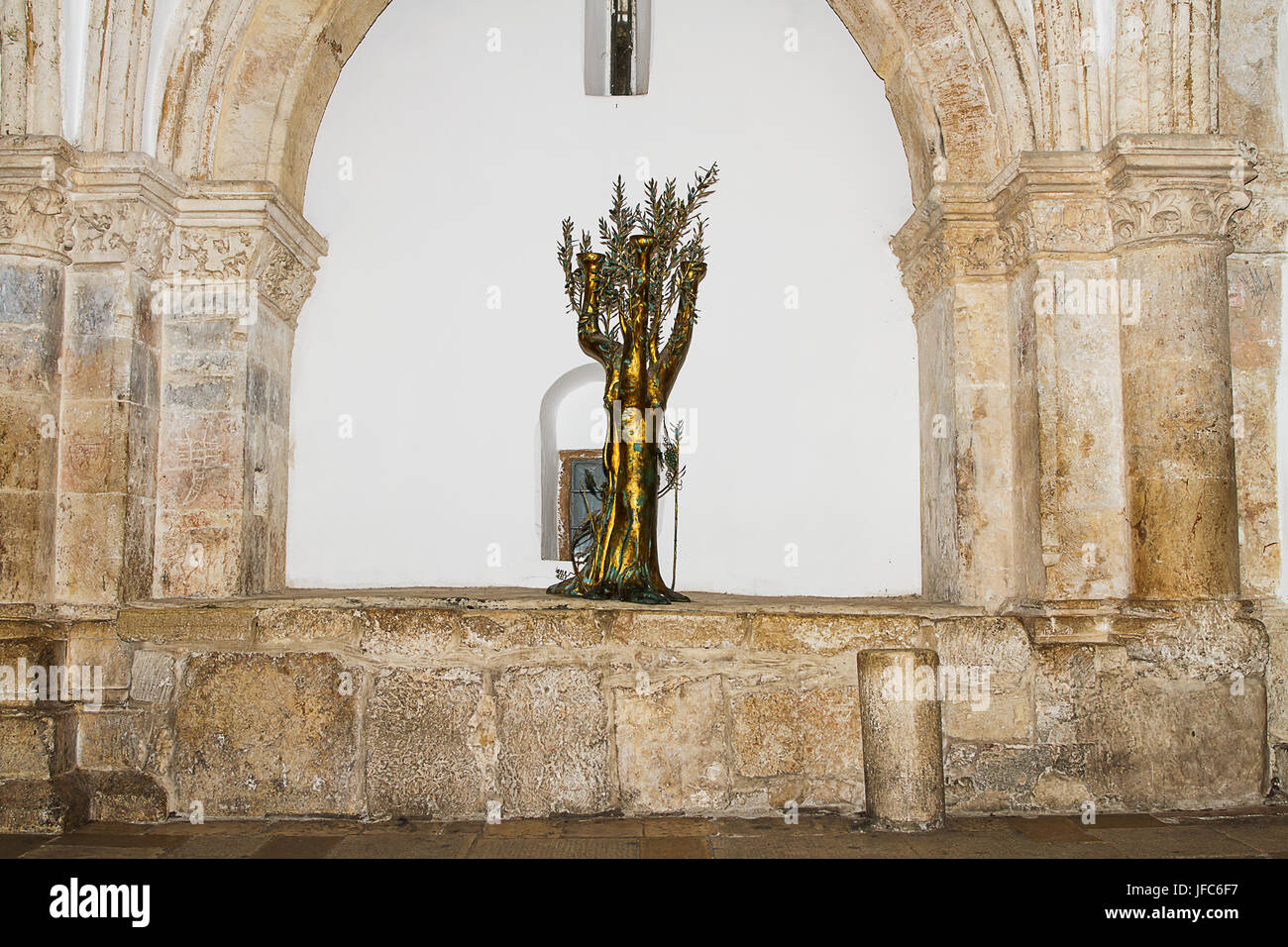 Cenacle (Room of the last supper) . Stock Photohttps://www.alamy.com/image-license-details/?v=1https://www.alamy.com/stock-photo-cenacle-room-of-the-last-supper-147171339.html
Cenacle (Room of the last supper) . Stock Photohttps://www.alamy.com/image-license-details/?v=1https://www.alamy.com/stock-photo-cenacle-room-of-the-last-supper-147171339.htmlRMJFC6F7–Cenacle (Room of the last supper) .
 Symbols of Judaism and national flag of Israel on grunge background Stock Photohttps://www.alamy.com/image-license-details/?v=1https://www.alamy.com/symbols-of-judaism-and-national-flag-of-israel-on-grunge-background-image526656712.html
Symbols of Judaism and national flag of Israel on grunge background Stock Photohttps://www.alamy.com/image-license-details/?v=1https://www.alamy.com/symbols-of-judaism-and-national-flag-of-israel-on-grunge-background-image526656712.htmlRF2NGR808–Symbols of Judaism and national flag of Israel on grunge background
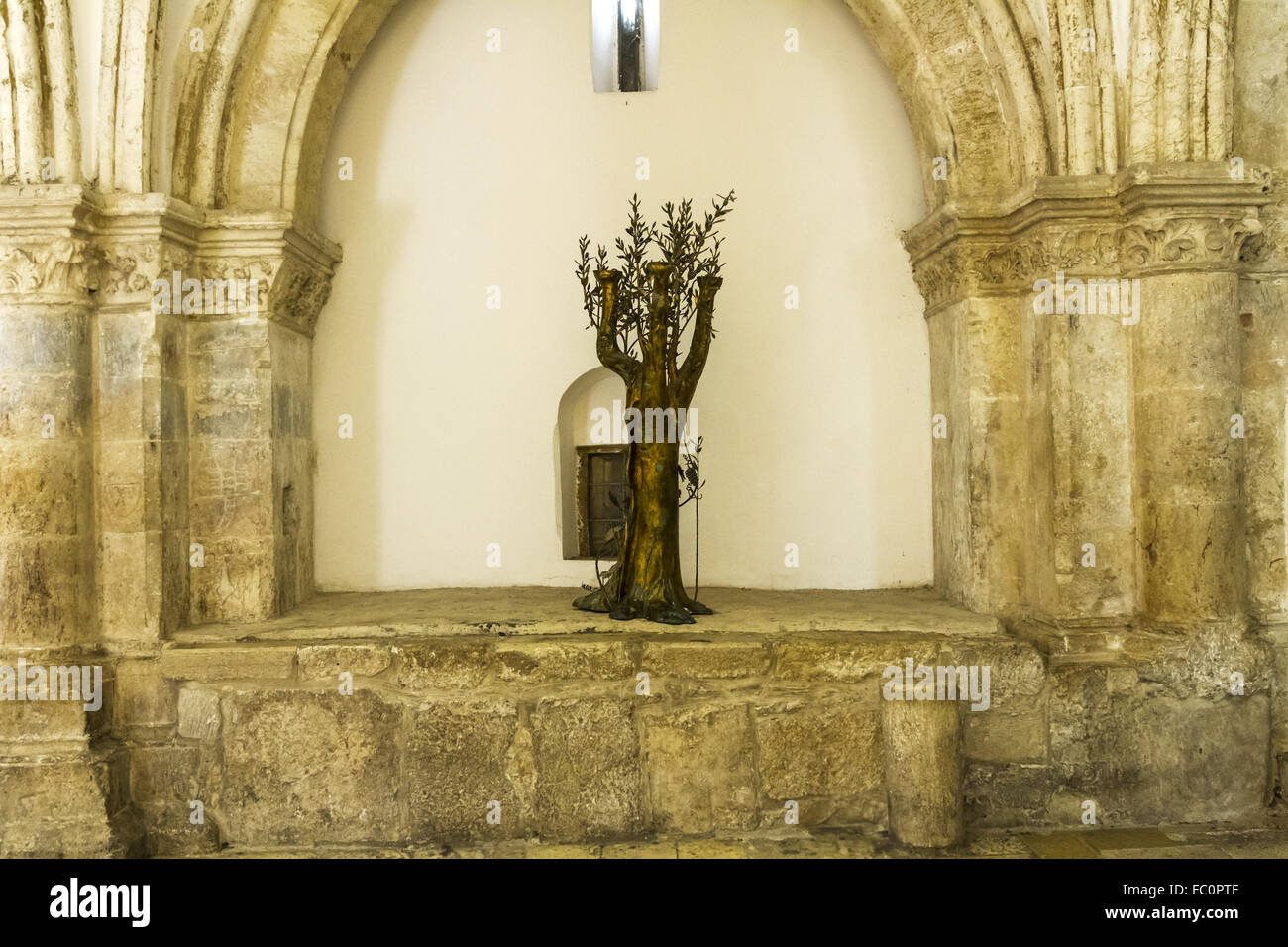 Cenacle (Room of the last supper) . Stock Photohttps://www.alamy.com/image-license-details/?v=1https://www.alamy.com/stock-photo-cenacle-room-of-the-last-supper-93445647.html
Cenacle (Room of the last supper) . Stock Photohttps://www.alamy.com/image-license-details/?v=1https://www.alamy.com/stock-photo-cenacle-room-of-the-last-supper-93445647.htmlRFFC0PTF–Cenacle (Room of the last supper) .
 Olive tree in upper room of Last Supper in Jerusalem Stock Photohttps://www.alamy.com/image-license-details/?v=1https://www.alamy.com/olive-tree-in-upper-room-of-last-supper-in-jerusalem-image508710732.html
Olive tree in upper room of Last Supper in Jerusalem Stock Photohttps://www.alamy.com/image-license-details/?v=1https://www.alamy.com/olive-tree-in-upper-room-of-last-supper-in-jerusalem-image508710732.htmlRF2MFHNMC–Olive tree in upper room of Last Supper in Jerusalem
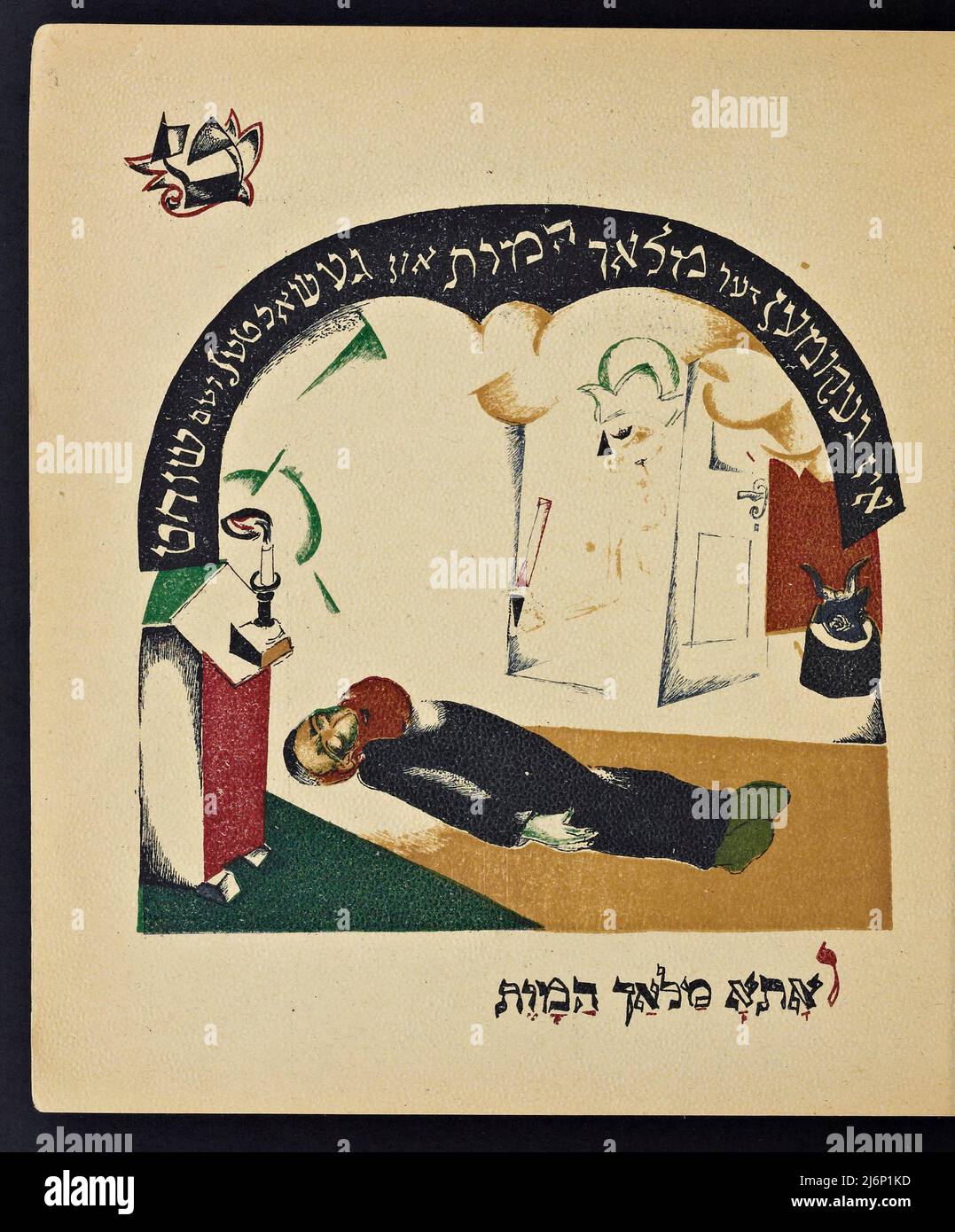 Illustrated Yiddish version of Had Gadya children's book illustrated by El Lissitzky (Lazar Markovich Lissitzky), and published in Kiev in 1919 Chad Gadya or Had Gadya ('one little goat, or 'one kid') is a playful cumulative song in Aramaic and Hebrew. It is sung at the end of the Passover Seder, the Jewish ritual feast that marks the beginning of the Jewish holiday of Passover. The melody may have its roots in Medieval German folk music. It first appeared in a Haggadah printed in Prague in 1590, which makes it the most recent inclusion in the traditional Passover seder liturgy Stock Photohttps://www.alamy.com/image-license-details/?v=1https://www.alamy.com/illustrated-yiddish-version-of-had-gadya-childrens-book-illustrated-by-el-lissitzky-lazar-markovich-lissitzky-and-published-in-kiev-in-1919-chad-gadya-or-had-gadya-one-little-goat-or-one-kid-is-a-playful-cumulative-song-in-aramaic-and-hebrew-it-is-sung-at-the-end-of-the-passover-seder-the-jewish-ritual-feast-that-marks-the-beginning-of-the-jewish-holiday-of-passover-the-melody-may-have-its-roots-in-medieval-german-folk-music-it-first-appeared-in-a-haggadah-printed-in-prague-in-1590-which-makes-it-the-most-recent-inclusion-in-the-traditional-passover-seder-liturgy-image468852145.html
Illustrated Yiddish version of Had Gadya children's book illustrated by El Lissitzky (Lazar Markovich Lissitzky), and published in Kiev in 1919 Chad Gadya or Had Gadya ('one little goat, or 'one kid') is a playful cumulative song in Aramaic and Hebrew. It is sung at the end of the Passover Seder, the Jewish ritual feast that marks the beginning of the Jewish holiday of Passover. The melody may have its roots in Medieval German folk music. It first appeared in a Haggadah printed in Prague in 1590, which makes it the most recent inclusion in the traditional Passover seder liturgy Stock Photohttps://www.alamy.com/image-license-details/?v=1https://www.alamy.com/illustrated-yiddish-version-of-had-gadya-childrens-book-illustrated-by-el-lissitzky-lazar-markovich-lissitzky-and-published-in-kiev-in-1919-chad-gadya-or-had-gadya-one-little-goat-or-one-kid-is-a-playful-cumulative-song-in-aramaic-and-hebrew-it-is-sung-at-the-end-of-the-passover-seder-the-jewish-ritual-feast-that-marks-the-beginning-of-the-jewish-holiday-of-passover-the-melody-may-have-its-roots-in-medieval-german-folk-music-it-first-appeared-in-a-haggadah-printed-in-prague-in-1590-which-makes-it-the-most-recent-inclusion-in-the-traditional-passover-seder-liturgy-image468852145.htmlRF2J6P1KD–Illustrated Yiddish version of Had Gadya children's book illustrated by El Lissitzky (Lazar Markovich Lissitzky), and published in Kiev in 1919 Chad Gadya or Had Gadya ('one little goat, or 'one kid') is a playful cumulative song in Aramaic and Hebrew. It is sung at the end of the Passover Seder, the Jewish ritual feast that marks the beginning of the Jewish holiday of Passover. The melody may have its roots in Medieval German folk music. It first appeared in a Haggadah printed in Prague in 1590, which makes it the most recent inclusion in the traditional Passover seder liturgy
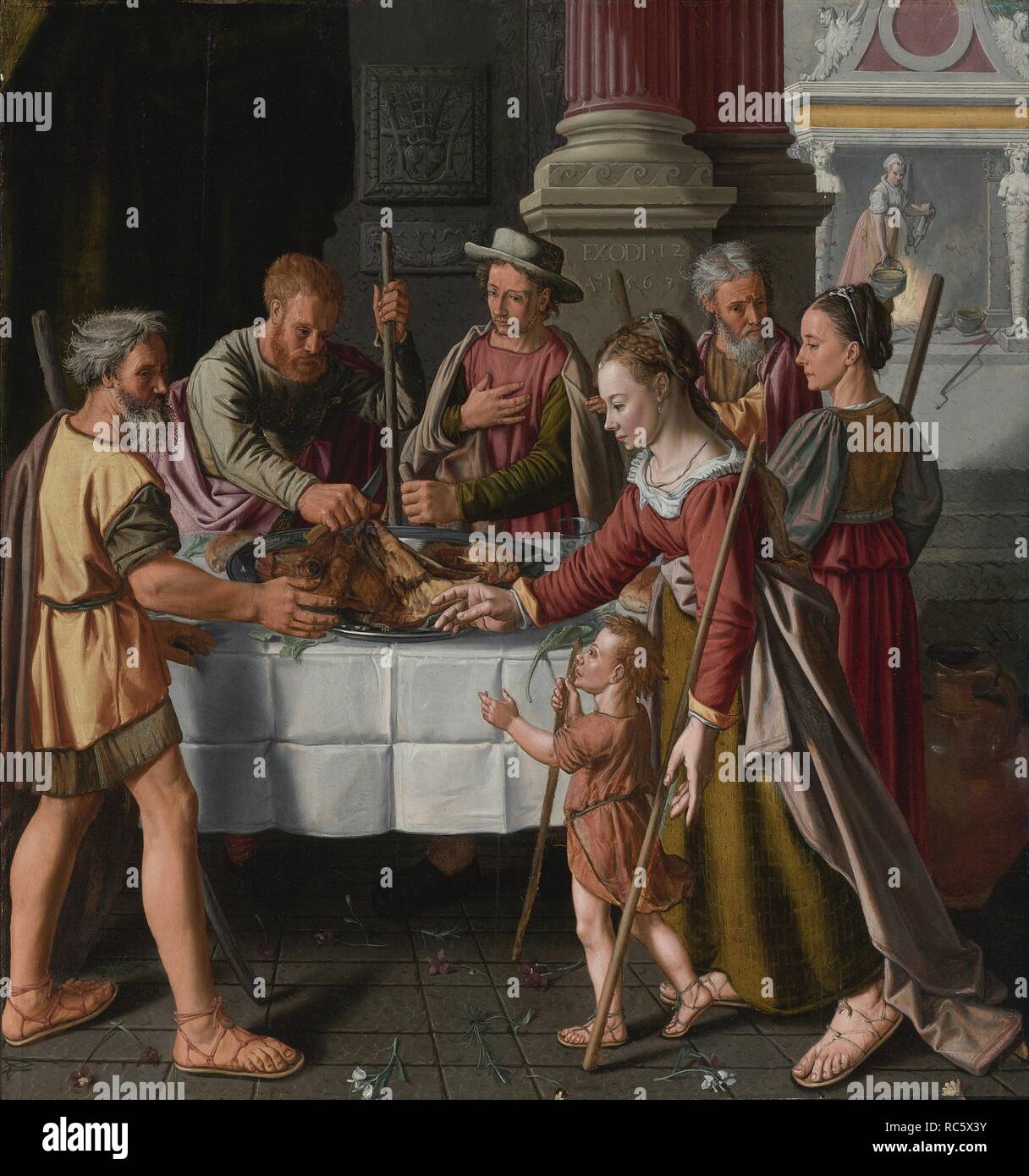 The First Passover Feast. Museum: PRIVATE COLLECTION. Author: Beuckelaer, Huybrecht. Stock Photohttps://www.alamy.com/image-license-details/?v=1https://www.alamy.com/the-first-passover-feast-museum-private-collection-author-beuckelaer-huybrecht-image231240911.html
The First Passover Feast. Museum: PRIVATE COLLECTION. Author: Beuckelaer, Huybrecht. Stock Photohttps://www.alamy.com/image-license-details/?v=1https://www.alamy.com/the-first-passover-feast-museum-private-collection-author-beuckelaer-huybrecht-image231240911.htmlRMRC5X3Y–The First Passover Feast. Museum: PRIVATE COLLECTION. Author: Beuckelaer, Huybrecht.
 Religious Stock Photohttps://www.alamy.com/image-license-details/?v=1https://www.alamy.com/religious-image1987673.html
Religious Stock Photohttps://www.alamy.com/image-license-details/?v=1https://www.alamy.com/religious-image1987673.htmlRFA3H45A–Religious
 Passover holiday. Stunning background featuring the menorah and star of David set against a beautiful patterned design. Vector illustration. Stock Vectorhttps://www.alamy.com/image-license-details/?v=1https://www.alamy.com/passover-holiday-stunning-background-featuring-the-menorah-and-star-of-david-set-against-a-beautiful-patterned-design-vector-illustration-image543259916.html
Passover holiday. Stunning background featuring the menorah and star of David set against a beautiful patterned design. Vector illustration. Stock Vectorhttps://www.alamy.com/image-license-details/?v=1https://www.alamy.com/passover-holiday-stunning-background-featuring-the-menorah-and-star-of-david-set-against-a-beautiful-patterned-design-vector-illustration-image543259916.htmlRF2PFRHFT–Passover holiday. Stunning background featuring the menorah and star of David set against a beautiful patterned design. Vector illustration.
 Jerusalem , Israel - January 06 . 2015 : Cenacle (Room of the last supper) So according to tradition is this the place, where Je Stock Photohttps://www.alamy.com/image-license-details/?v=1https://www.alamy.com/stock-photo-jerusalem-israel-january-06-2015-cenacle-room-of-the-last-supper-so-77461458.html
Jerusalem , Israel - January 06 . 2015 : Cenacle (Room of the last supper) So according to tradition is this the place, where Je Stock Photohttps://www.alamy.com/image-license-details/?v=1https://www.alamy.com/stock-photo-jerusalem-israel-january-06-2015-cenacle-room-of-the-last-supper-so-77461458.htmlRMEE0JTJ–Jerusalem , Israel - January 06 . 2015 : Cenacle (Room of the last supper) So according to tradition is this the place, where Je
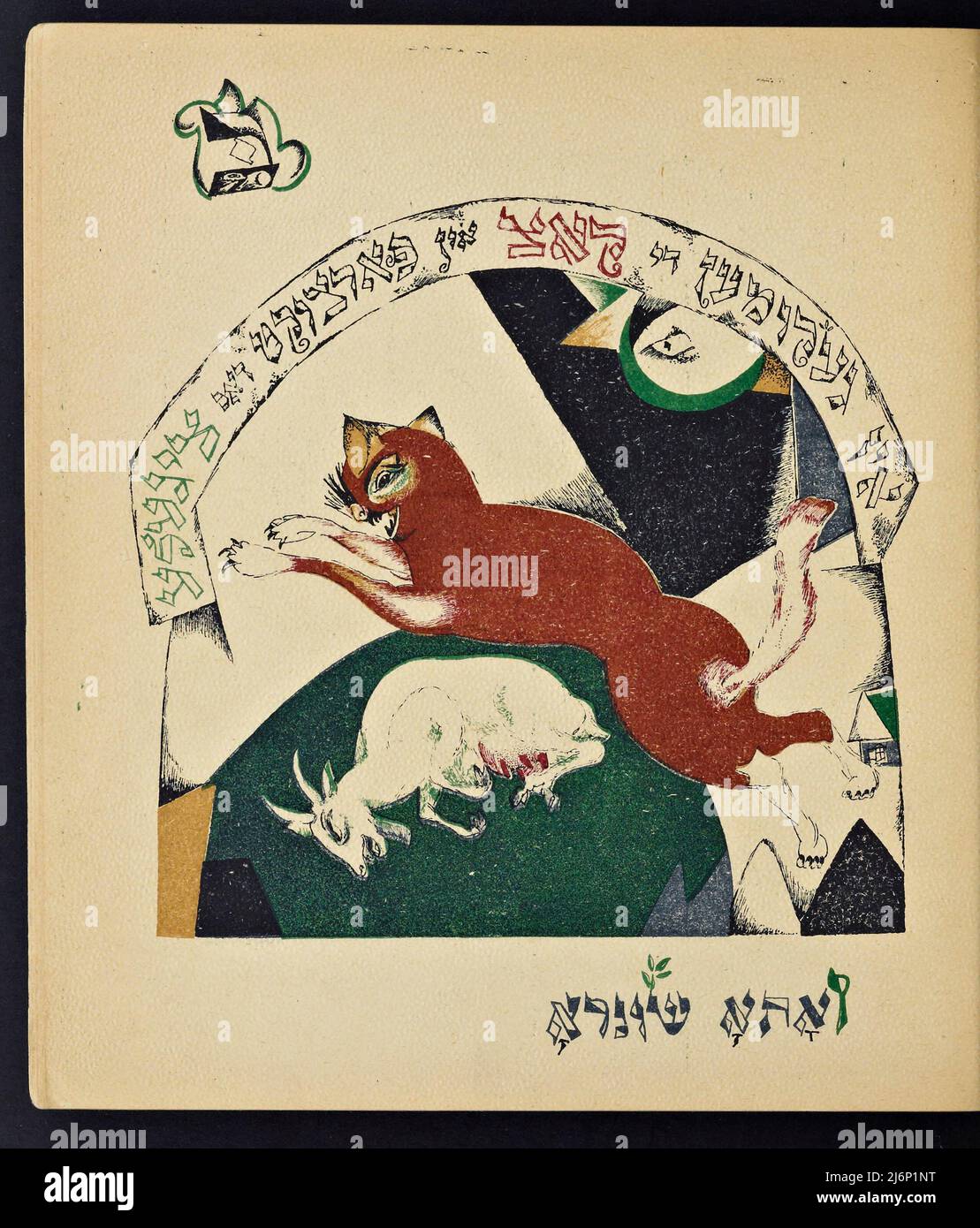 Illustrated Yiddish version of Had Gadya children's book illustrated by El Lissitzky (Lazar Markovich Lissitzky), and published in Kiev in 1919 Chad Gadya or Had Gadya ('one little goat, or 'one kid') is a playful cumulative song in Aramaic and Hebrew. It is sung at the end of the Passover Seder, the Jewish ritual feast that marks the beginning of the Jewish holiday of Passover. The melody may have its roots in Medieval German folk music. It first appeared in a Haggadah printed in Prague in 1590, which makes it the most recent inclusion in the traditional Passover seder liturgy Stock Photohttps://www.alamy.com/image-license-details/?v=1https://www.alamy.com/illustrated-yiddish-version-of-had-gadya-childrens-book-illustrated-by-el-lissitzky-lazar-markovich-lissitzky-and-published-in-kiev-in-1919-chad-gadya-or-had-gadya-one-little-goat-or-one-kid-is-a-playful-cumulative-song-in-aramaic-and-hebrew-it-is-sung-at-the-end-of-the-passover-seder-the-jewish-ritual-feast-that-marks-the-beginning-of-the-jewish-holiday-of-passover-the-melody-may-have-its-roots-in-medieval-german-folk-music-it-first-appeared-in-a-haggadah-printed-in-prague-in-1590-which-makes-it-the-most-recent-inclusion-in-the-traditional-passover-seder-liturgy-image468852212.html
Illustrated Yiddish version of Had Gadya children's book illustrated by El Lissitzky (Lazar Markovich Lissitzky), and published in Kiev in 1919 Chad Gadya or Had Gadya ('one little goat, or 'one kid') is a playful cumulative song in Aramaic and Hebrew. It is sung at the end of the Passover Seder, the Jewish ritual feast that marks the beginning of the Jewish holiday of Passover. The melody may have its roots in Medieval German folk music. It first appeared in a Haggadah printed in Prague in 1590, which makes it the most recent inclusion in the traditional Passover seder liturgy Stock Photohttps://www.alamy.com/image-license-details/?v=1https://www.alamy.com/illustrated-yiddish-version-of-had-gadya-childrens-book-illustrated-by-el-lissitzky-lazar-markovich-lissitzky-and-published-in-kiev-in-1919-chad-gadya-or-had-gadya-one-little-goat-or-one-kid-is-a-playful-cumulative-song-in-aramaic-and-hebrew-it-is-sung-at-the-end-of-the-passover-seder-the-jewish-ritual-feast-that-marks-the-beginning-of-the-jewish-holiday-of-passover-the-melody-may-have-its-roots-in-medieval-german-folk-music-it-first-appeared-in-a-haggadah-printed-in-prague-in-1590-which-makes-it-the-most-recent-inclusion-in-the-traditional-passover-seder-liturgy-image468852212.htmlRF2J6P1NT–Illustrated Yiddish version of Had Gadya children's book illustrated by El Lissitzky (Lazar Markovich Lissitzky), and published in Kiev in 1919 Chad Gadya or Had Gadya ('one little goat, or 'one kid') is a playful cumulative song in Aramaic and Hebrew. It is sung at the end of the Passover Seder, the Jewish ritual feast that marks the beginning of the Jewish holiday of Passover. The melody may have its roots in Medieval German folk music. It first appeared in a Haggadah printed in Prague in 1590, which makes it the most recent inclusion in the traditional Passover seder liturgy
 Celebrate the Passover holiday in style with this festive background featuring the Menorah, matzo, and four glasses of red wine arranged against a pat Stock Vectorhttps://www.alamy.com/image-license-details/?v=1https://www.alamy.com/celebrate-the-passover-holiday-in-style-with-this-festive-background-featuring-the-menorah-matzo-and-four-glasses-of-red-wine-arranged-against-a-pat-image543259946.html
Celebrate the Passover holiday in style with this festive background featuring the Menorah, matzo, and four glasses of red wine arranged against a pat Stock Vectorhttps://www.alamy.com/image-license-details/?v=1https://www.alamy.com/celebrate-the-passover-holiday-in-style-with-this-festive-background-featuring-the-menorah-matzo-and-four-glasses-of-red-wine-arranged-against-a-pat-image543259946.htmlRF2PFRHGX–Celebrate the Passover holiday in style with this festive background featuring the Menorah, matzo, and four glasses of red wine arranged against a pat
 Illustrated Yiddish version of Had Gadya children's book illustrated by El Lissitzky (Lazar Markovich Lissitzky), and published in Kiev in 1919 Chad Gadya or Had Gadya ('one little goat, or 'one kid') is a playful cumulative song in Aramaic and Hebrew. It is sung at the end of the Passover Seder, the Jewish ritual feast that marks the beginning of the Jewish holiday of Passover. The melody may have its roots in Medieval German folk music. It first appeared in a Haggadah printed in Prague in 1590, which makes it the most recent inclusion in the traditional Passover seder liturgy Stock Photohttps://www.alamy.com/image-license-details/?v=1https://www.alamy.com/illustrated-yiddish-version-of-had-gadya-childrens-book-illustrated-by-el-lissitzky-lazar-markovich-lissitzky-and-published-in-kiev-in-1919-chad-gadya-or-had-gadya-one-little-goat-or-one-kid-is-a-playful-cumulative-song-in-aramaic-and-hebrew-it-is-sung-at-the-end-of-the-passover-seder-the-jewish-ritual-feast-that-marks-the-beginning-of-the-jewish-holiday-of-passover-the-melody-may-have-its-roots-in-medieval-german-folk-music-it-first-appeared-in-a-haggadah-printed-in-prague-in-1590-which-makes-it-the-most-recent-inclusion-in-the-traditional-passover-seder-liturgy-image468852214.html
Illustrated Yiddish version of Had Gadya children's book illustrated by El Lissitzky (Lazar Markovich Lissitzky), and published in Kiev in 1919 Chad Gadya or Had Gadya ('one little goat, or 'one kid') is a playful cumulative song in Aramaic and Hebrew. It is sung at the end of the Passover Seder, the Jewish ritual feast that marks the beginning of the Jewish holiday of Passover. The melody may have its roots in Medieval German folk music. It first appeared in a Haggadah printed in Prague in 1590, which makes it the most recent inclusion in the traditional Passover seder liturgy Stock Photohttps://www.alamy.com/image-license-details/?v=1https://www.alamy.com/illustrated-yiddish-version-of-had-gadya-childrens-book-illustrated-by-el-lissitzky-lazar-markovich-lissitzky-and-published-in-kiev-in-1919-chad-gadya-or-had-gadya-one-little-goat-or-one-kid-is-a-playful-cumulative-song-in-aramaic-and-hebrew-it-is-sung-at-the-end-of-the-passover-seder-the-jewish-ritual-feast-that-marks-the-beginning-of-the-jewish-holiday-of-passover-the-melody-may-have-its-roots-in-medieval-german-folk-music-it-first-appeared-in-a-haggadah-printed-in-prague-in-1590-which-makes-it-the-most-recent-inclusion-in-the-traditional-passover-seder-liturgy-image468852214.htmlRF2J6P1NX–Illustrated Yiddish version of Had Gadya children's book illustrated by El Lissitzky (Lazar Markovich Lissitzky), and published in Kiev in 1919 Chad Gadya or Had Gadya ('one little goat, or 'one kid') is a playful cumulative song in Aramaic and Hebrew. It is sung at the end of the Passover Seder, the Jewish ritual feast that marks the beginning of the Jewish holiday of Passover. The melody may have its roots in Medieval German folk music. It first appeared in a Haggadah printed in Prague in 1590, which makes it the most recent inclusion in the traditional Passover seder liturgy
 Mark the occasion of Passover with this elegant background featuring the Menorah, Matzah, matzo, and a wineglass of red wine set against a intricate p Stock Vectorhttps://www.alamy.com/image-license-details/?v=1https://www.alamy.com/mark-the-occasion-of-passover-with-this-elegant-background-featuring-the-menorah-matzah-matzo-and-a-wineglass-of-red-wine-set-against-a-intricate-p-image543259943.html
Mark the occasion of Passover with this elegant background featuring the Menorah, Matzah, matzo, and a wineglass of red wine set against a intricate p Stock Vectorhttps://www.alamy.com/image-license-details/?v=1https://www.alamy.com/mark-the-occasion-of-passover-with-this-elegant-background-featuring-the-menorah-matzah-matzo-and-a-wineglass-of-red-wine-set-against-a-intricate-p-image543259943.htmlRF2PFRHGR–Mark the occasion of Passover with this elegant background featuring the Menorah, Matzah, matzo, and a wineglass of red wine set against a intricate p
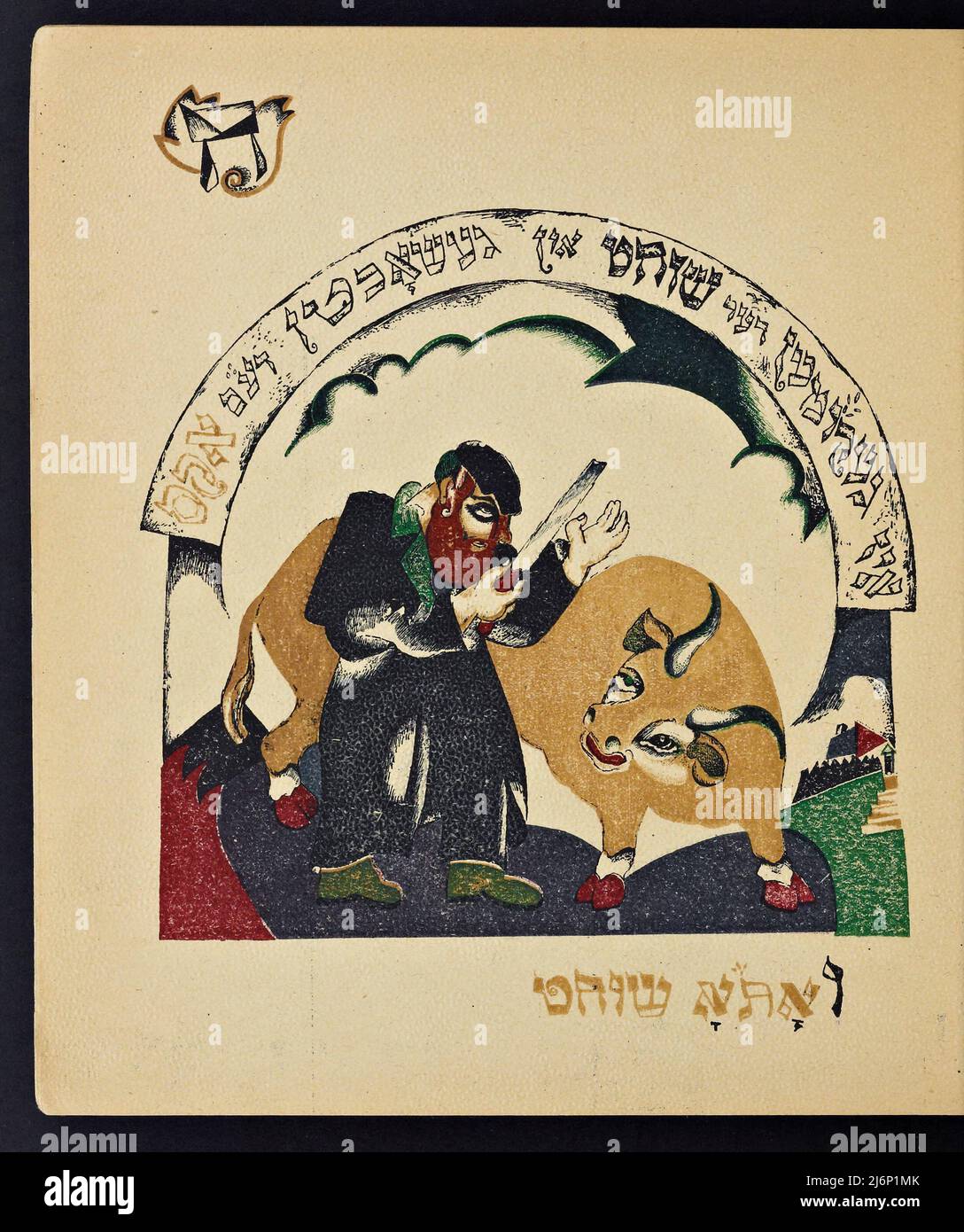 Illustrated Yiddish version of Had Gadya children's book illustrated by El Lissitzky (Lazar Markovich Lissitzky), and published in Kiev in 1919 Chad Gadya or Had Gadya ('one little goat, or 'one kid') is a playful cumulative song in Aramaic and Hebrew. It is sung at the end of the Passover Seder, the Jewish ritual feast that marks the beginning of the Jewish holiday of Passover. The melody may have its roots in Medieval German folk music. It first appeared in a Haggadah printed in Prague in 1590, which makes it the most recent inclusion in the traditional Passover seder liturgy Stock Photohttps://www.alamy.com/image-license-details/?v=1https://www.alamy.com/illustrated-yiddish-version-of-had-gadya-childrens-book-illustrated-by-el-lissitzky-lazar-markovich-lissitzky-and-published-in-kiev-in-1919-chad-gadya-or-had-gadya-one-little-goat-or-one-kid-is-a-playful-cumulative-song-in-aramaic-and-hebrew-it-is-sung-at-the-end-of-the-passover-seder-the-jewish-ritual-feast-that-marks-the-beginning-of-the-jewish-holiday-of-passover-the-melody-may-have-its-roots-in-medieval-german-folk-music-it-first-appeared-in-a-haggadah-printed-in-prague-in-1590-which-makes-it-the-most-recent-inclusion-in-the-traditional-passover-seder-liturgy-image468852179.html
Illustrated Yiddish version of Had Gadya children's book illustrated by El Lissitzky (Lazar Markovich Lissitzky), and published in Kiev in 1919 Chad Gadya or Had Gadya ('one little goat, or 'one kid') is a playful cumulative song in Aramaic and Hebrew. It is sung at the end of the Passover Seder, the Jewish ritual feast that marks the beginning of the Jewish holiday of Passover. The melody may have its roots in Medieval German folk music. It first appeared in a Haggadah printed in Prague in 1590, which makes it the most recent inclusion in the traditional Passover seder liturgy Stock Photohttps://www.alamy.com/image-license-details/?v=1https://www.alamy.com/illustrated-yiddish-version-of-had-gadya-childrens-book-illustrated-by-el-lissitzky-lazar-markovich-lissitzky-and-published-in-kiev-in-1919-chad-gadya-or-had-gadya-one-little-goat-or-one-kid-is-a-playful-cumulative-song-in-aramaic-and-hebrew-it-is-sung-at-the-end-of-the-passover-seder-the-jewish-ritual-feast-that-marks-the-beginning-of-the-jewish-holiday-of-passover-the-melody-may-have-its-roots-in-medieval-german-folk-music-it-first-appeared-in-a-haggadah-printed-in-prague-in-1590-which-makes-it-the-most-recent-inclusion-in-the-traditional-passover-seder-liturgy-image468852179.htmlRF2J6P1MK–Illustrated Yiddish version of Had Gadya children's book illustrated by El Lissitzky (Lazar Markovich Lissitzky), and published in Kiev in 1919 Chad Gadya or Had Gadya ('one little goat, or 'one kid') is a playful cumulative song in Aramaic and Hebrew. It is sung at the end of the Passover Seder, the Jewish ritual feast that marks the beginning of the Jewish holiday of Passover. The melody may have its roots in Medieval German folk music. It first appeared in a Haggadah printed in Prague in 1590, which makes it the most recent inclusion in the traditional Passover seder liturgy
 Wishing you a joyous Passover celebration! This festive background showcases the Menorah, Matzah, matzo,and a glass of red wine against a beautifully Stock Vectorhttps://www.alamy.com/image-license-details/?v=1https://www.alamy.com/wishing-you-a-joyous-passover-celebration!-this-festive-background-showcases-the-menorah-matzah-matzoand-a-glass-of-red-wine-against-a-beautifully-image543259853.html
Wishing you a joyous Passover celebration! This festive background showcases the Menorah, Matzah, matzo,and a glass of red wine against a beautifully Stock Vectorhttps://www.alamy.com/image-license-details/?v=1https://www.alamy.com/wishing-you-a-joyous-passover-celebration!-this-festive-background-showcases-the-menorah-matzah-matzoand-a-glass-of-red-wine-against-a-beautifully-image543259853.htmlRF2PFRHDH–Wishing you a joyous Passover celebration! This festive background showcases the Menorah, Matzah, matzo,and a glass of red wine against a beautifully
 Illustrated Yiddish version of Had Gadya children's book illustrated by El Lissitzky (Lazar Markovich Lissitzky), and published in Kiev in 1919 Chad Gadya or Had Gadya ('one little goat, or 'one kid') is a playful cumulative song in Aramaic and Hebrew. It is sung at the end of the Passover Seder, the Jewish ritual feast that marks the beginning of the Jewish holiday of Passover. The melody may have its roots in Medieval German folk music. It first appeared in a Haggadah printed in Prague in 1590, which makes it the most recent inclusion in the traditional Passover seder liturgy Stock Photohttps://www.alamy.com/image-license-details/?v=1https://www.alamy.com/illustrated-yiddish-version-of-had-gadya-childrens-book-illustrated-by-el-lissitzky-lazar-markovich-lissitzky-and-published-in-kiev-in-1919-chad-gadya-or-had-gadya-one-little-goat-or-one-kid-is-a-playful-cumulative-song-in-aramaic-and-hebrew-it-is-sung-at-the-end-of-the-passover-seder-the-jewish-ritual-feast-that-marks-the-beginning-of-the-jewish-holiday-of-passover-the-melody-may-have-its-roots-in-medieval-german-folk-music-it-first-appeared-in-a-haggadah-printed-in-prague-in-1590-which-makes-it-the-most-recent-inclusion-in-the-traditional-passover-seder-liturgy-image468852200.html
Illustrated Yiddish version of Had Gadya children's book illustrated by El Lissitzky (Lazar Markovich Lissitzky), and published in Kiev in 1919 Chad Gadya or Had Gadya ('one little goat, or 'one kid') is a playful cumulative song in Aramaic and Hebrew. It is sung at the end of the Passover Seder, the Jewish ritual feast that marks the beginning of the Jewish holiday of Passover. The melody may have its roots in Medieval German folk music. It first appeared in a Haggadah printed in Prague in 1590, which makes it the most recent inclusion in the traditional Passover seder liturgy Stock Photohttps://www.alamy.com/image-license-details/?v=1https://www.alamy.com/illustrated-yiddish-version-of-had-gadya-childrens-book-illustrated-by-el-lissitzky-lazar-markovich-lissitzky-and-published-in-kiev-in-1919-chad-gadya-or-had-gadya-one-little-goat-or-one-kid-is-a-playful-cumulative-song-in-aramaic-and-hebrew-it-is-sung-at-the-end-of-the-passover-seder-the-jewish-ritual-feast-that-marks-the-beginning-of-the-jewish-holiday-of-passover-the-melody-may-have-its-roots-in-medieval-german-folk-music-it-first-appeared-in-a-haggadah-printed-in-prague-in-1590-which-makes-it-the-most-recent-inclusion-in-the-traditional-passover-seder-liturgy-image468852200.htmlRF2J6P1NC–Illustrated Yiddish version of Had Gadya children's book illustrated by El Lissitzky (Lazar Markovich Lissitzky), and published in Kiev in 1919 Chad Gadya or Had Gadya ('one little goat, or 'one kid') is a playful cumulative song in Aramaic and Hebrew. It is sung at the end of the Passover Seder, the Jewish ritual feast that marks the beginning of the Jewish holiday of Passover. The melody may have its roots in Medieval German folk music. It first appeared in a Haggadah printed in Prague in 1590, which makes it the most recent inclusion in the traditional Passover seder liturgy
 Illustrated Yiddish version of Had Gadya children's book illustrated by El Lissitzky (Lazar Markovich Lissitzky), and published in Kiev in 1919 Chad Gadya or Had Gadya ('one little goat, or 'one kid') is a playful cumulative song in Aramaic and Hebrew. It is sung at the end of the Passover Seder, the Jewish ritual feast that marks the beginning of the Jewish holiday of Passover. The melody may have its roots in Medieval German folk music. It first appeared in a Haggadah printed in Prague in 1590, which makes it the most recent inclusion in the traditional Passover seder liturgy Stock Photohttps://www.alamy.com/image-license-details/?v=1https://www.alamy.com/illustrated-yiddish-version-of-had-gadya-childrens-book-illustrated-by-el-lissitzky-lazar-markovich-lissitzky-and-published-in-kiev-in-1919-chad-gadya-or-had-gadya-one-little-goat-or-one-kid-is-a-playful-cumulative-song-in-aramaic-and-hebrew-it-is-sung-at-the-end-of-the-passover-seder-the-jewish-ritual-feast-that-marks-the-beginning-of-the-jewish-holiday-of-passover-the-melody-may-have-its-roots-in-medieval-german-folk-music-it-first-appeared-in-a-haggadah-printed-in-prague-in-1590-which-makes-it-the-most-recent-inclusion-in-the-traditional-passover-seder-liturgy-image468852143.html
Illustrated Yiddish version of Had Gadya children's book illustrated by El Lissitzky (Lazar Markovich Lissitzky), and published in Kiev in 1919 Chad Gadya or Had Gadya ('one little goat, or 'one kid') is a playful cumulative song in Aramaic and Hebrew. It is sung at the end of the Passover Seder, the Jewish ritual feast that marks the beginning of the Jewish holiday of Passover. The melody may have its roots in Medieval German folk music. It first appeared in a Haggadah printed in Prague in 1590, which makes it the most recent inclusion in the traditional Passover seder liturgy Stock Photohttps://www.alamy.com/image-license-details/?v=1https://www.alamy.com/illustrated-yiddish-version-of-had-gadya-childrens-book-illustrated-by-el-lissitzky-lazar-markovich-lissitzky-and-published-in-kiev-in-1919-chad-gadya-or-had-gadya-one-little-goat-or-one-kid-is-a-playful-cumulative-song-in-aramaic-and-hebrew-it-is-sung-at-the-end-of-the-passover-seder-the-jewish-ritual-feast-that-marks-the-beginning-of-the-jewish-holiday-of-passover-the-melody-may-have-its-roots-in-medieval-german-folk-music-it-first-appeared-in-a-haggadah-printed-in-prague-in-1590-which-makes-it-the-most-recent-inclusion-in-the-traditional-passover-seder-liturgy-image468852143.htmlRF2J6P1KB–Illustrated Yiddish version of Had Gadya children's book illustrated by El Lissitzky (Lazar Markovich Lissitzky), and published in Kiev in 1919 Chad Gadya or Had Gadya ('one little goat, or 'one kid') is a playful cumulative song in Aramaic and Hebrew. It is sung at the end of the Passover Seder, the Jewish ritual feast that marks the beginning of the Jewish holiday of Passover. The melody may have its roots in Medieval German folk music. It first appeared in a Haggadah printed in Prague in 1590, which makes it the most recent inclusion in the traditional Passover seder liturgy
 Illustrated Yiddish version of Had Gadya children's book illustrated by El Lissitzky (Lazar Markovich Lissitzky), and published in Kiev in 1919 Chad Gadya or Had Gadya ('one little goat, or 'one kid') is a playful cumulative song in Aramaic and Hebrew. It is sung at the end of the Passover Seder, the Jewish ritual feast that marks the beginning of the Jewish holiday of Passover. The melody may have its roots in Medieval German folk music. It first appeared in a Haggadah printed in Prague in 1590, which makes it the most recent inclusion in the traditional Passover seder liturgy Stock Photohttps://www.alamy.com/image-license-details/?v=1https://www.alamy.com/illustrated-yiddish-version-of-had-gadya-childrens-book-illustrated-by-el-lissitzky-lazar-markovich-lissitzky-and-published-in-kiev-in-1919-chad-gadya-or-had-gadya-one-little-goat-or-one-kid-is-a-playful-cumulative-song-in-aramaic-and-hebrew-it-is-sung-at-the-end-of-the-passover-seder-the-jewish-ritual-feast-that-marks-the-beginning-of-the-jewish-holiday-of-passover-the-melody-may-have-its-roots-in-medieval-german-folk-music-it-first-appeared-in-a-haggadah-printed-in-prague-in-1590-which-makes-it-the-most-recent-inclusion-in-the-traditional-passover-seder-liturgy-image468852197.html
Illustrated Yiddish version of Had Gadya children's book illustrated by El Lissitzky (Lazar Markovich Lissitzky), and published in Kiev in 1919 Chad Gadya or Had Gadya ('one little goat, or 'one kid') is a playful cumulative song in Aramaic and Hebrew. It is sung at the end of the Passover Seder, the Jewish ritual feast that marks the beginning of the Jewish holiday of Passover. The melody may have its roots in Medieval German folk music. It first appeared in a Haggadah printed in Prague in 1590, which makes it the most recent inclusion in the traditional Passover seder liturgy Stock Photohttps://www.alamy.com/image-license-details/?v=1https://www.alamy.com/illustrated-yiddish-version-of-had-gadya-childrens-book-illustrated-by-el-lissitzky-lazar-markovich-lissitzky-and-published-in-kiev-in-1919-chad-gadya-or-had-gadya-one-little-goat-or-one-kid-is-a-playful-cumulative-song-in-aramaic-and-hebrew-it-is-sung-at-the-end-of-the-passover-seder-the-jewish-ritual-feast-that-marks-the-beginning-of-the-jewish-holiday-of-passover-the-melody-may-have-its-roots-in-medieval-german-folk-music-it-first-appeared-in-a-haggadah-printed-in-prague-in-1590-which-makes-it-the-most-recent-inclusion-in-the-traditional-passover-seder-liturgy-image468852197.htmlRF2J6P1N9–Illustrated Yiddish version of Had Gadya children's book illustrated by El Lissitzky (Lazar Markovich Lissitzky), and published in Kiev in 1919 Chad Gadya or Had Gadya ('one little goat, or 'one kid') is a playful cumulative song in Aramaic and Hebrew. It is sung at the end of the Passover Seder, the Jewish ritual feast that marks the beginning of the Jewish holiday of Passover. The melody may have its roots in Medieval German folk music. It first appeared in a Haggadah printed in Prague in 1590, which makes it the most recent inclusion in the traditional Passover seder liturgy
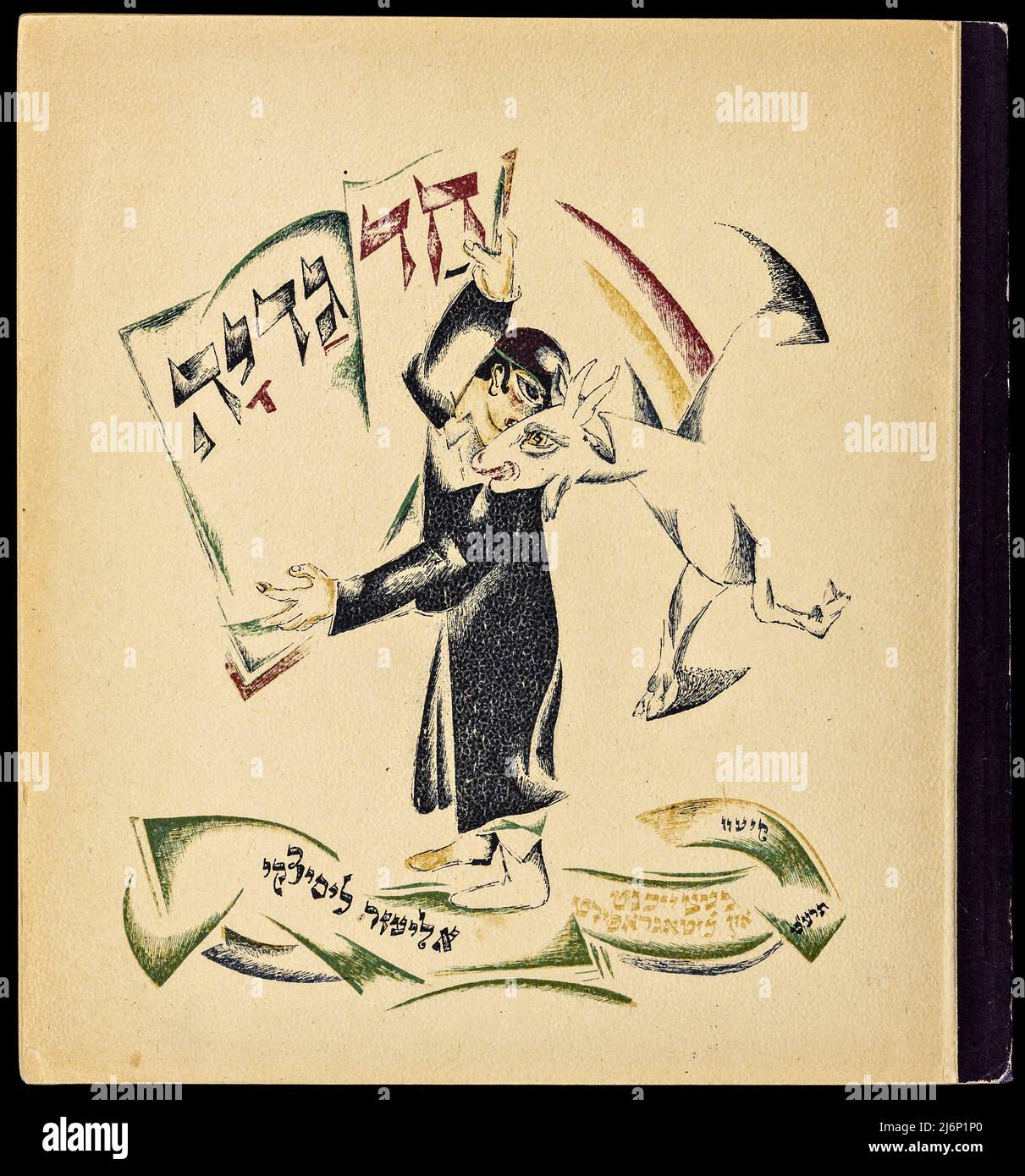 Illustrated Yiddish version of Had Gadya children's book illustrated by El Lissitzky (Lazar Markovich Lissitzky), and published in Kiev in 1919 Chad Gadya or Had Gadya ('one little goat, or 'one kid') is a playful cumulative song in Aramaic and Hebrew. It is sung at the end of the Passover Seder, the Jewish ritual feast that marks the beginning of the Jewish holiday of Passover. The melody may have its roots in Medieval German folk music. It first appeared in a Haggadah printed in Prague in 1590, which makes it the most recent inclusion in the traditional Passover seder liturgy Stock Photohttps://www.alamy.com/image-license-details/?v=1https://www.alamy.com/illustrated-yiddish-version-of-had-gadya-childrens-book-illustrated-by-el-lissitzky-lazar-markovich-lissitzky-and-published-in-kiev-in-1919-chad-gadya-or-had-gadya-one-little-goat-or-one-kid-is-a-playful-cumulative-song-in-aramaic-and-hebrew-it-is-sung-at-the-end-of-the-passover-seder-the-jewish-ritual-feast-that-marks-the-beginning-of-the-jewish-holiday-of-passover-the-melody-may-have-its-roots-in-medieval-german-folk-music-it-first-appeared-in-a-haggadah-printed-in-prague-in-1590-which-makes-it-the-most-recent-inclusion-in-the-traditional-passover-seder-liturgy-image468852216.html
Illustrated Yiddish version of Had Gadya children's book illustrated by El Lissitzky (Lazar Markovich Lissitzky), and published in Kiev in 1919 Chad Gadya or Had Gadya ('one little goat, or 'one kid') is a playful cumulative song in Aramaic and Hebrew. It is sung at the end of the Passover Seder, the Jewish ritual feast that marks the beginning of the Jewish holiday of Passover. The melody may have its roots in Medieval German folk music. It first appeared in a Haggadah printed in Prague in 1590, which makes it the most recent inclusion in the traditional Passover seder liturgy Stock Photohttps://www.alamy.com/image-license-details/?v=1https://www.alamy.com/illustrated-yiddish-version-of-had-gadya-childrens-book-illustrated-by-el-lissitzky-lazar-markovich-lissitzky-and-published-in-kiev-in-1919-chad-gadya-or-had-gadya-one-little-goat-or-one-kid-is-a-playful-cumulative-song-in-aramaic-and-hebrew-it-is-sung-at-the-end-of-the-passover-seder-the-jewish-ritual-feast-that-marks-the-beginning-of-the-jewish-holiday-of-passover-the-melody-may-have-its-roots-in-medieval-german-folk-music-it-first-appeared-in-a-haggadah-printed-in-prague-in-1590-which-makes-it-the-most-recent-inclusion-in-the-traditional-passover-seder-liturgy-image468852216.htmlRF2J6P1P0–Illustrated Yiddish version of Had Gadya children's book illustrated by El Lissitzky (Lazar Markovich Lissitzky), and published in Kiev in 1919 Chad Gadya or Had Gadya ('one little goat, or 'one kid') is a playful cumulative song in Aramaic and Hebrew. It is sung at the end of the Passover Seder, the Jewish ritual feast that marks the beginning of the Jewish holiday of Passover. The melody may have its roots in Medieval German folk music. It first appeared in a Haggadah printed in Prague in 1590, which makes it the most recent inclusion in the traditional Passover seder liturgy
 Illustrated Yiddish version of Had Gadya children's book illustrated by El Lissitzky (Lazar Markovich Lissitzky), and published in Kiev in 1919 Chad Gadya or Had Gadya ('one little goat, or 'one kid') is a playful cumulative song in Aramaic and Hebrew. It is sung at the end of the Passover Seder, the Jewish ritual feast that marks the beginning of the Jewish holiday of Passover. The melody may have its roots in Medieval German folk music. It first appeared in a Haggadah printed in Prague in 1590, which makes it the most recent inclusion in the traditional Passover seder liturgy Stock Photohttps://www.alamy.com/image-license-details/?v=1https://www.alamy.com/illustrated-yiddish-version-of-had-gadya-childrens-book-illustrated-by-el-lissitzky-lazar-markovich-lissitzky-and-published-in-kiev-in-1919-chad-gadya-or-had-gadya-one-little-goat-or-one-kid-is-a-playful-cumulative-song-in-aramaic-and-hebrew-it-is-sung-at-the-end-of-the-passover-seder-the-jewish-ritual-feast-that-marks-the-beginning-of-the-jewish-holiday-of-passover-the-melody-may-have-its-roots-in-medieval-german-folk-music-it-first-appeared-in-a-haggadah-printed-in-prague-in-1590-which-makes-it-the-most-recent-inclusion-in-the-traditional-passover-seder-liturgy-image468852208.html
Illustrated Yiddish version of Had Gadya children's book illustrated by El Lissitzky (Lazar Markovich Lissitzky), and published in Kiev in 1919 Chad Gadya or Had Gadya ('one little goat, or 'one kid') is a playful cumulative song in Aramaic and Hebrew. It is sung at the end of the Passover Seder, the Jewish ritual feast that marks the beginning of the Jewish holiday of Passover. The melody may have its roots in Medieval German folk music. It first appeared in a Haggadah printed in Prague in 1590, which makes it the most recent inclusion in the traditional Passover seder liturgy Stock Photohttps://www.alamy.com/image-license-details/?v=1https://www.alamy.com/illustrated-yiddish-version-of-had-gadya-childrens-book-illustrated-by-el-lissitzky-lazar-markovich-lissitzky-and-published-in-kiev-in-1919-chad-gadya-or-had-gadya-one-little-goat-or-one-kid-is-a-playful-cumulative-song-in-aramaic-and-hebrew-it-is-sung-at-the-end-of-the-passover-seder-the-jewish-ritual-feast-that-marks-the-beginning-of-the-jewish-holiday-of-passover-the-melody-may-have-its-roots-in-medieval-german-folk-music-it-first-appeared-in-a-haggadah-printed-in-prague-in-1590-which-makes-it-the-most-recent-inclusion-in-the-traditional-passover-seder-liturgy-image468852208.htmlRF2J6P1NM–Illustrated Yiddish version of Had Gadya children's book illustrated by El Lissitzky (Lazar Markovich Lissitzky), and published in Kiev in 1919 Chad Gadya or Had Gadya ('one little goat, or 'one kid') is a playful cumulative song in Aramaic and Hebrew. It is sung at the end of the Passover Seder, the Jewish ritual feast that marks the beginning of the Jewish holiday of Passover. The melody may have its roots in Medieval German folk music. It first appeared in a Haggadah printed in Prague in 1590, which makes it the most recent inclusion in the traditional Passover seder liturgy
 Illustrated Yiddish version of Had Gadya children's book illustrated by El Lissitzky (Lazar Markovich Lissitzky), and published in Kiev in 1919 Chad Gadya or Had Gadya ('one little goat, or 'one kid') is a playful cumulative song in Aramaic and Hebrew. It is sung at the end of the Passover Seder, the Jewish ritual feast that marks the beginning of the Jewish holiday of Passover. The melody may have its roots in Medieval German folk music. It first appeared in a Haggadah printed in Prague in 1590, which makes it the most recent inclusion in the traditional Passover seder liturgy Stock Photohttps://www.alamy.com/image-license-details/?v=1https://www.alamy.com/illustrated-yiddish-version-of-had-gadya-childrens-book-illustrated-by-el-lissitzky-lazar-markovich-lissitzky-and-published-in-kiev-in-1919-chad-gadya-or-had-gadya-one-little-goat-or-one-kid-is-a-playful-cumulative-song-in-aramaic-and-hebrew-it-is-sung-at-the-end-of-the-passover-seder-the-jewish-ritual-feast-that-marks-the-beginning-of-the-jewish-holiday-of-passover-the-melody-may-have-its-roots-in-medieval-german-folk-music-it-first-appeared-in-a-haggadah-printed-in-prague-in-1590-which-makes-it-the-most-recent-inclusion-in-the-traditional-passover-seder-liturgy-image468852219.html
Illustrated Yiddish version of Had Gadya children's book illustrated by El Lissitzky (Lazar Markovich Lissitzky), and published in Kiev in 1919 Chad Gadya or Had Gadya ('one little goat, or 'one kid') is a playful cumulative song in Aramaic and Hebrew. It is sung at the end of the Passover Seder, the Jewish ritual feast that marks the beginning of the Jewish holiday of Passover. The melody may have its roots in Medieval German folk music. It first appeared in a Haggadah printed in Prague in 1590, which makes it the most recent inclusion in the traditional Passover seder liturgy Stock Photohttps://www.alamy.com/image-license-details/?v=1https://www.alamy.com/illustrated-yiddish-version-of-had-gadya-childrens-book-illustrated-by-el-lissitzky-lazar-markovich-lissitzky-and-published-in-kiev-in-1919-chad-gadya-or-had-gadya-one-little-goat-or-one-kid-is-a-playful-cumulative-song-in-aramaic-and-hebrew-it-is-sung-at-the-end-of-the-passover-seder-the-jewish-ritual-feast-that-marks-the-beginning-of-the-jewish-holiday-of-passover-the-melody-may-have-its-roots-in-medieval-german-folk-music-it-first-appeared-in-a-haggadah-printed-in-prague-in-1590-which-makes-it-the-most-recent-inclusion-in-the-traditional-passover-seder-liturgy-image468852219.htmlRF2J6P1P3–Illustrated Yiddish version of Had Gadya children's book illustrated by El Lissitzky (Lazar Markovich Lissitzky), and published in Kiev in 1919 Chad Gadya or Had Gadya ('one little goat, or 'one kid') is a playful cumulative song in Aramaic and Hebrew. It is sung at the end of the Passover Seder, the Jewish ritual feast that marks the beginning of the Jewish holiday of Passover. The melody may have its roots in Medieval German folk music. It first appeared in a Haggadah printed in Prague in 1590, which makes it the most recent inclusion in the traditional Passover seder liturgy